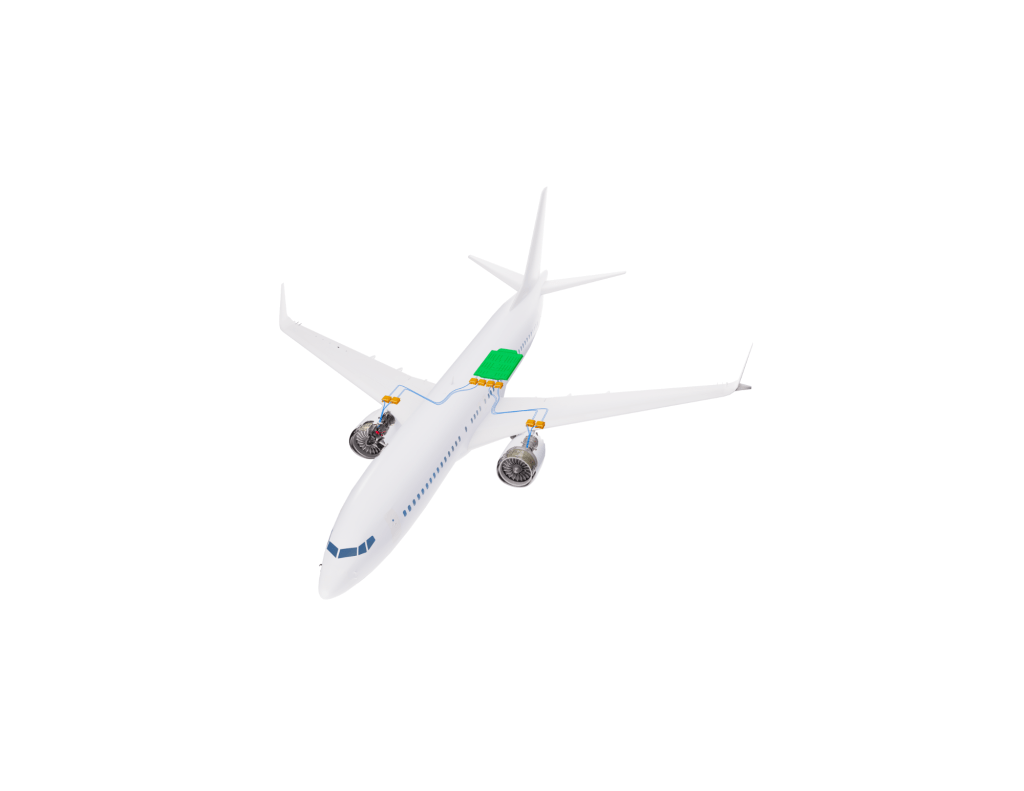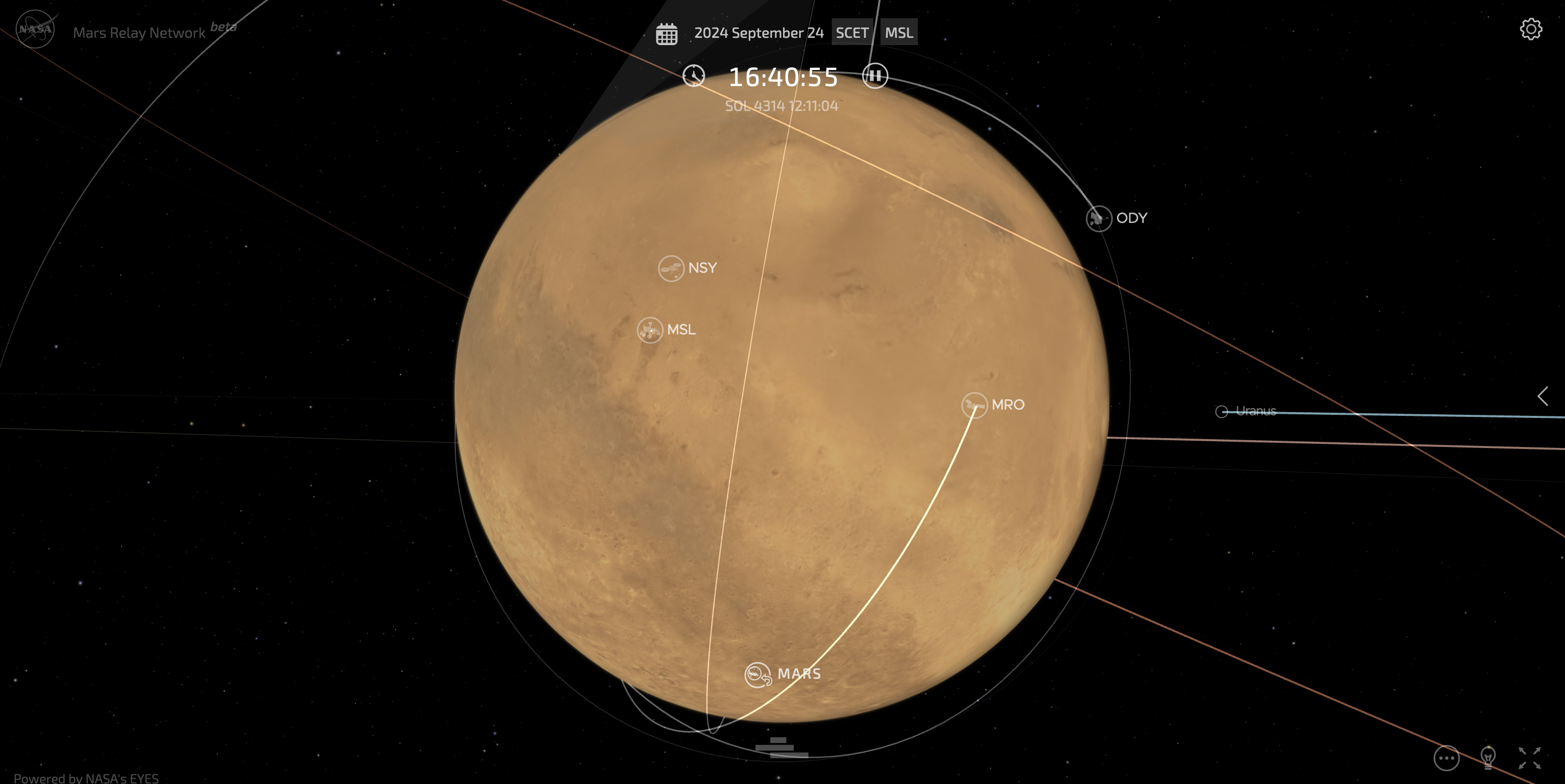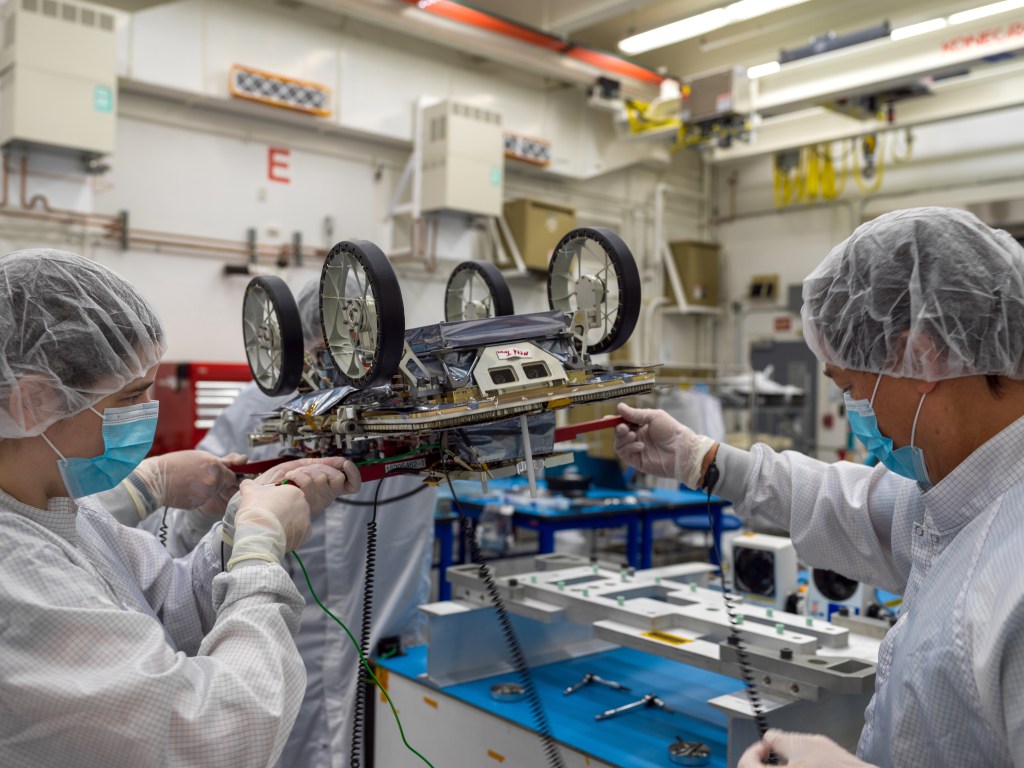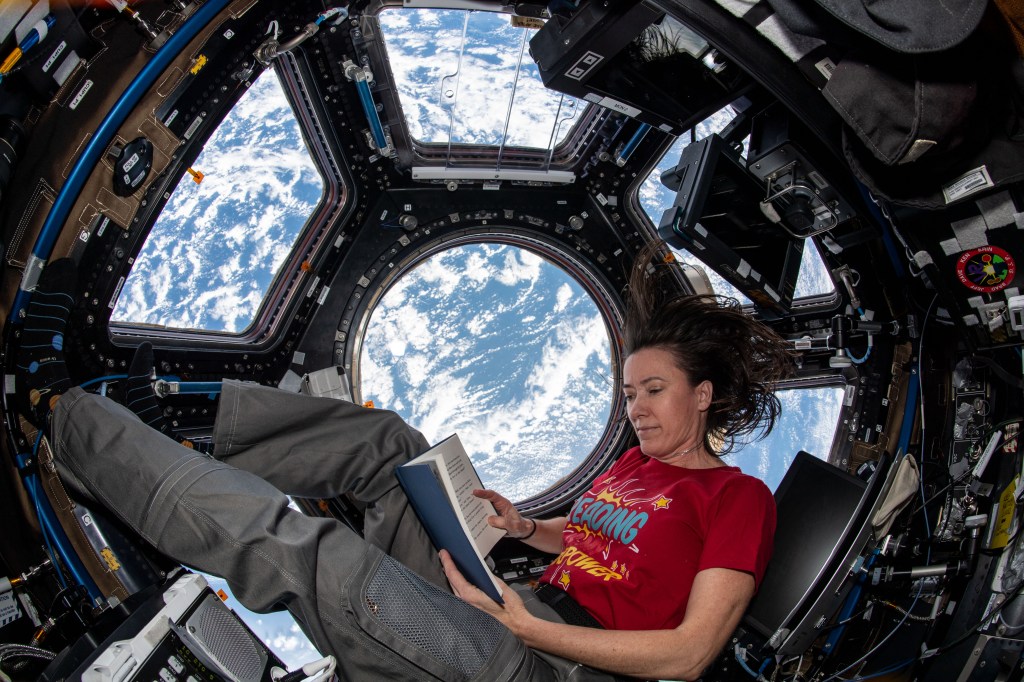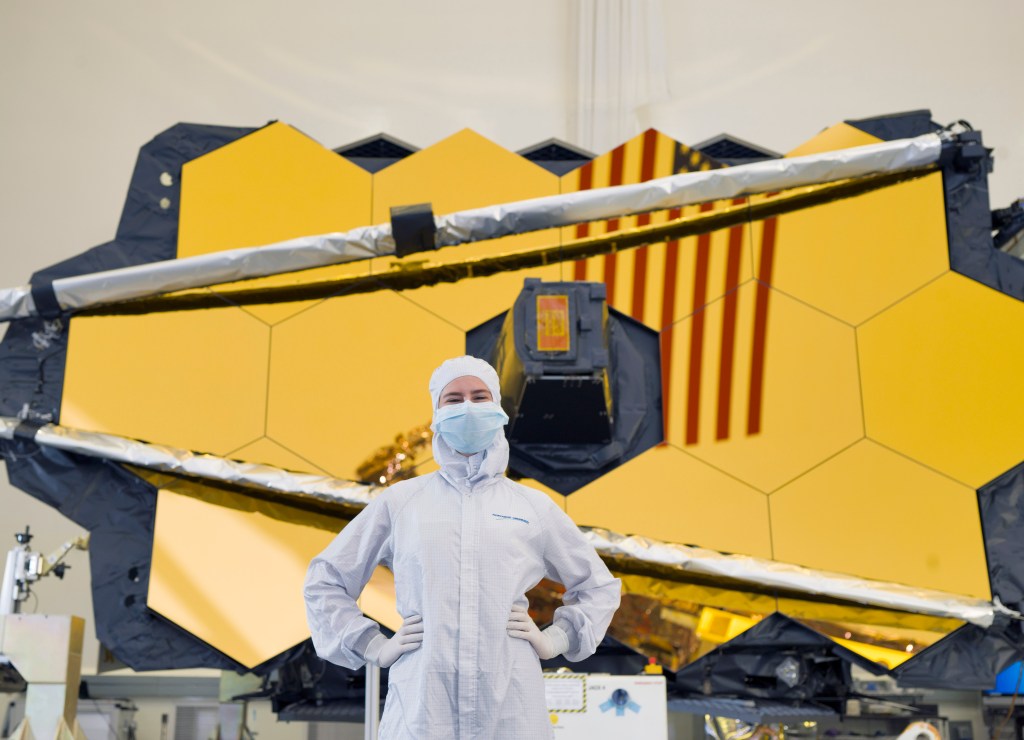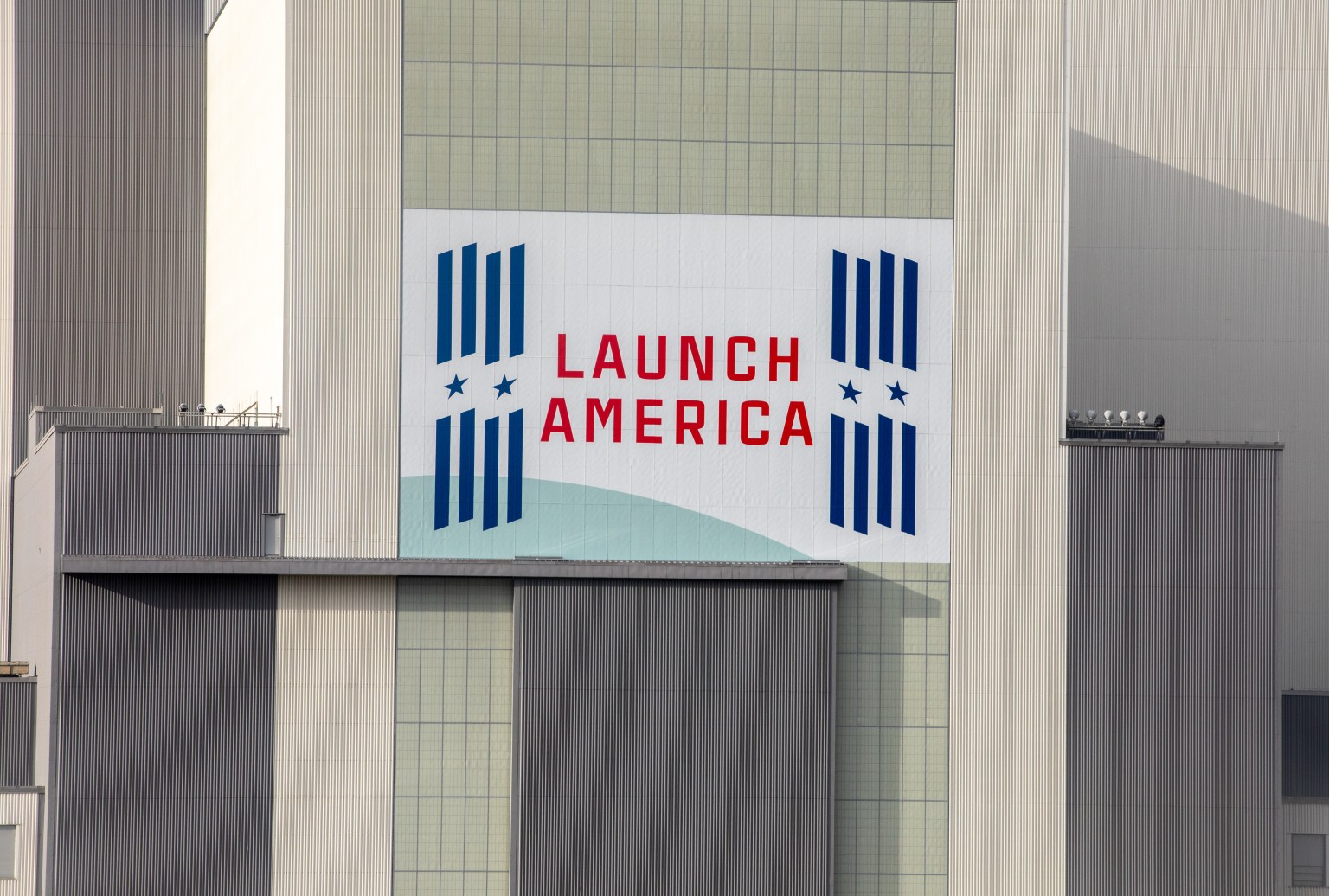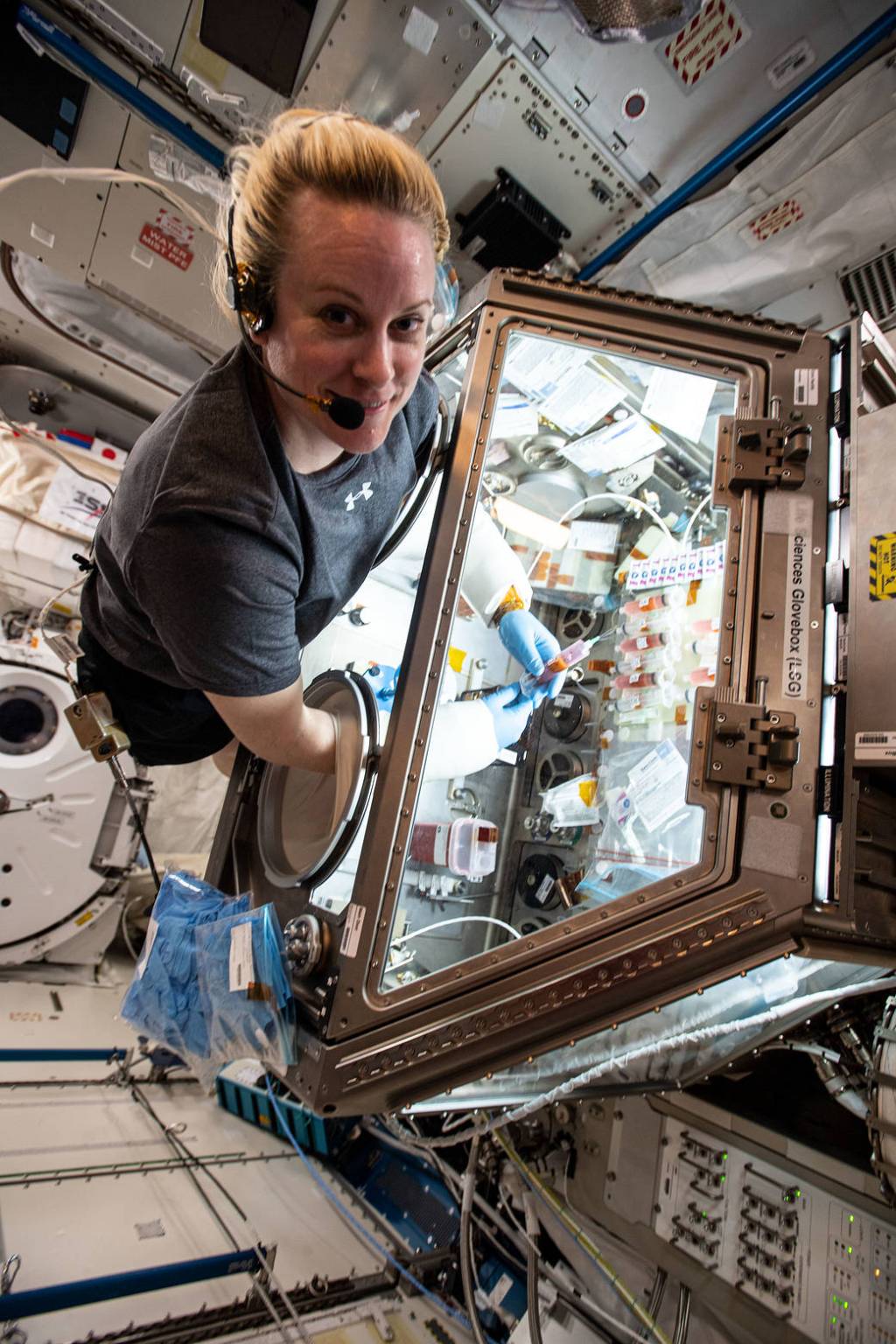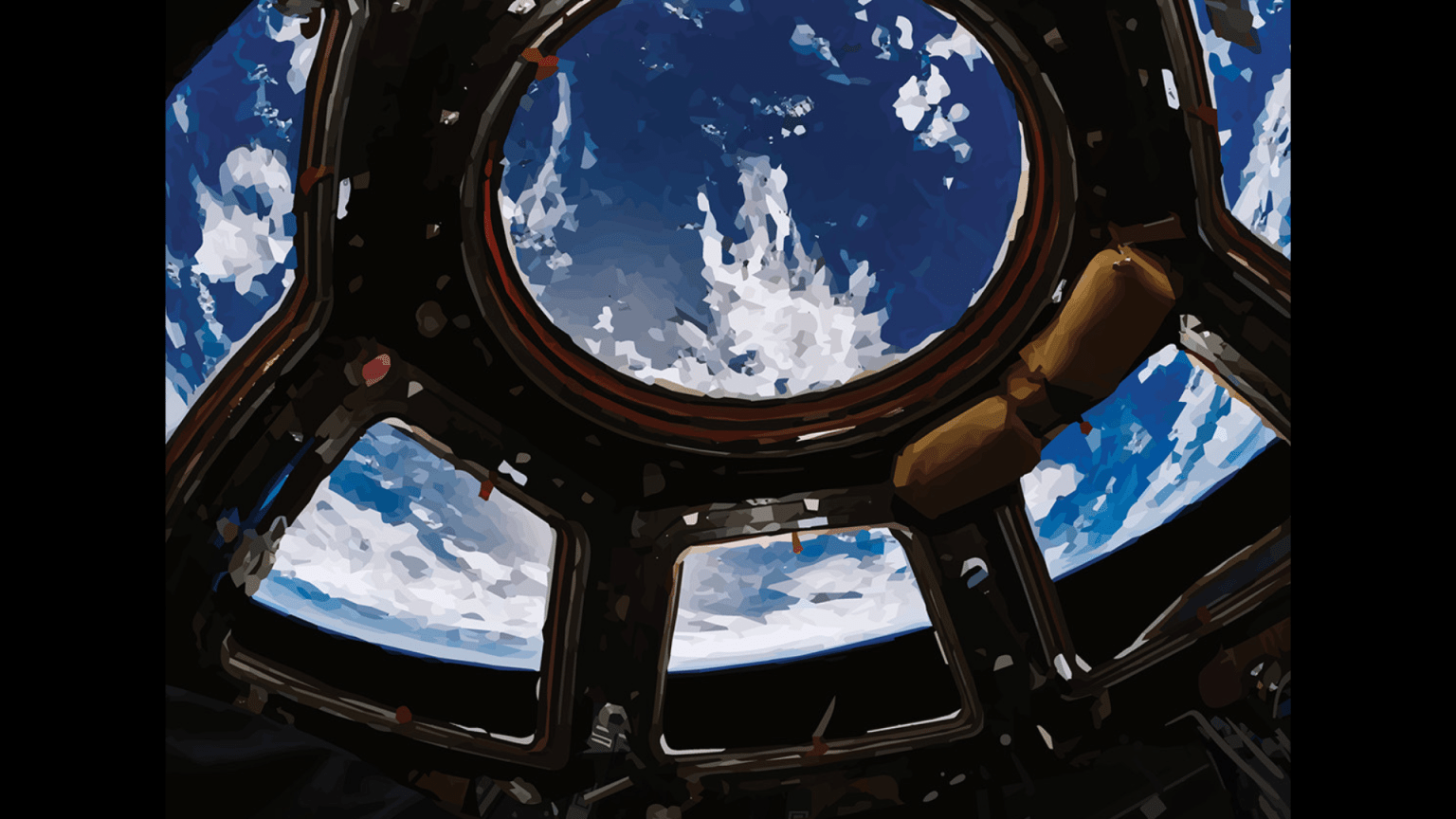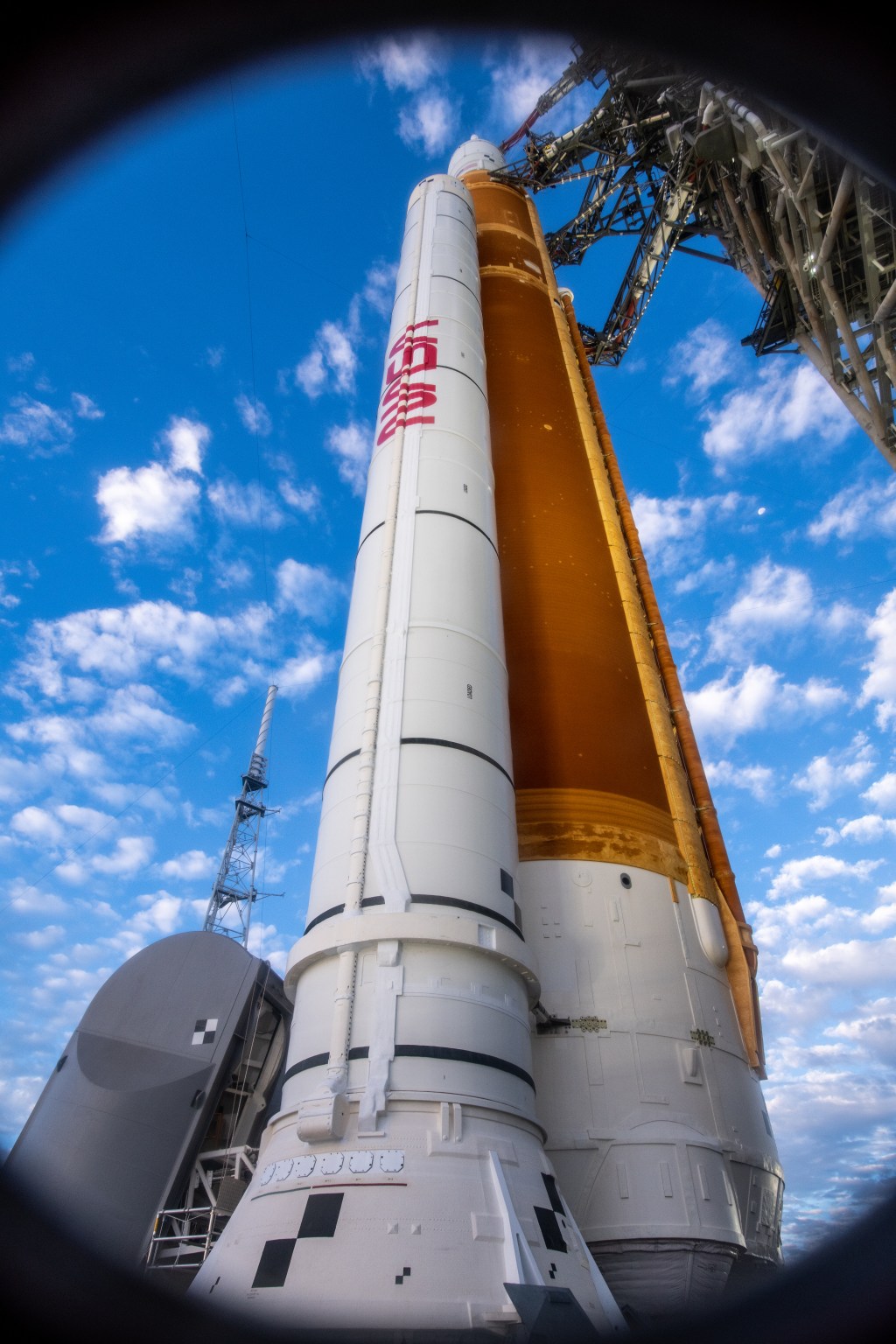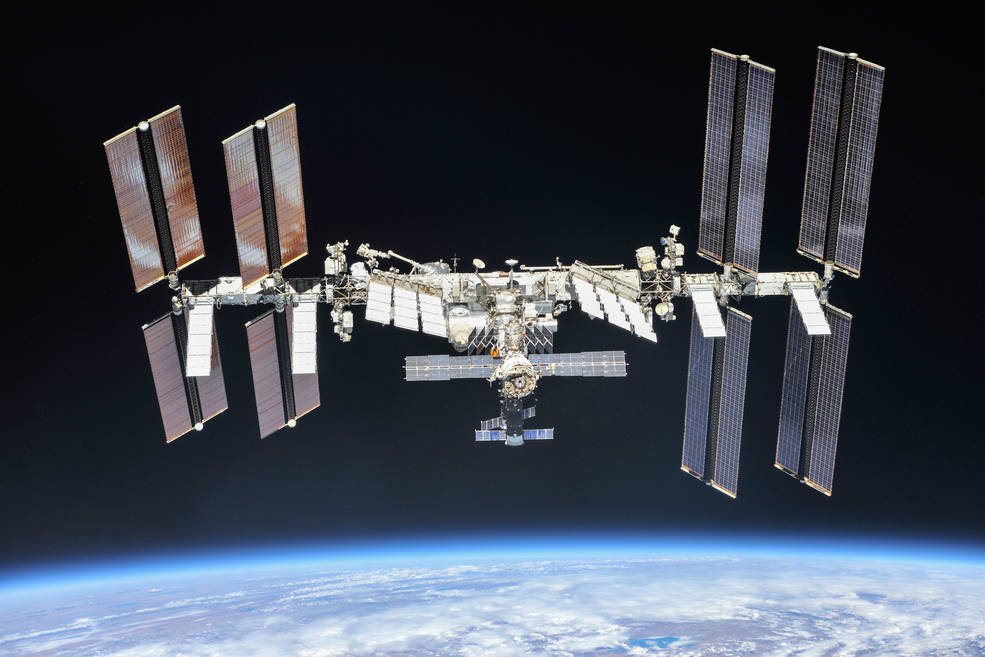
Station Assembly Elements
TODAY
Modules and Elements Installed
International and Commercial Partners
NASA
Roll-Out Solar Arrays 1A/1B
Launched on June 6, 2023. Installed on June 9 and 15, 2023.
The roll-out siolar arrays augment the International Space Station’s eight main solar arrays. They produce more than 20 kilowatts of electricity and enable a 30% increase in power production over the station’s current arrays.
Learn more about the Roll-Out Solar Arrays about Roll-Out Solar Arrays 1A/1B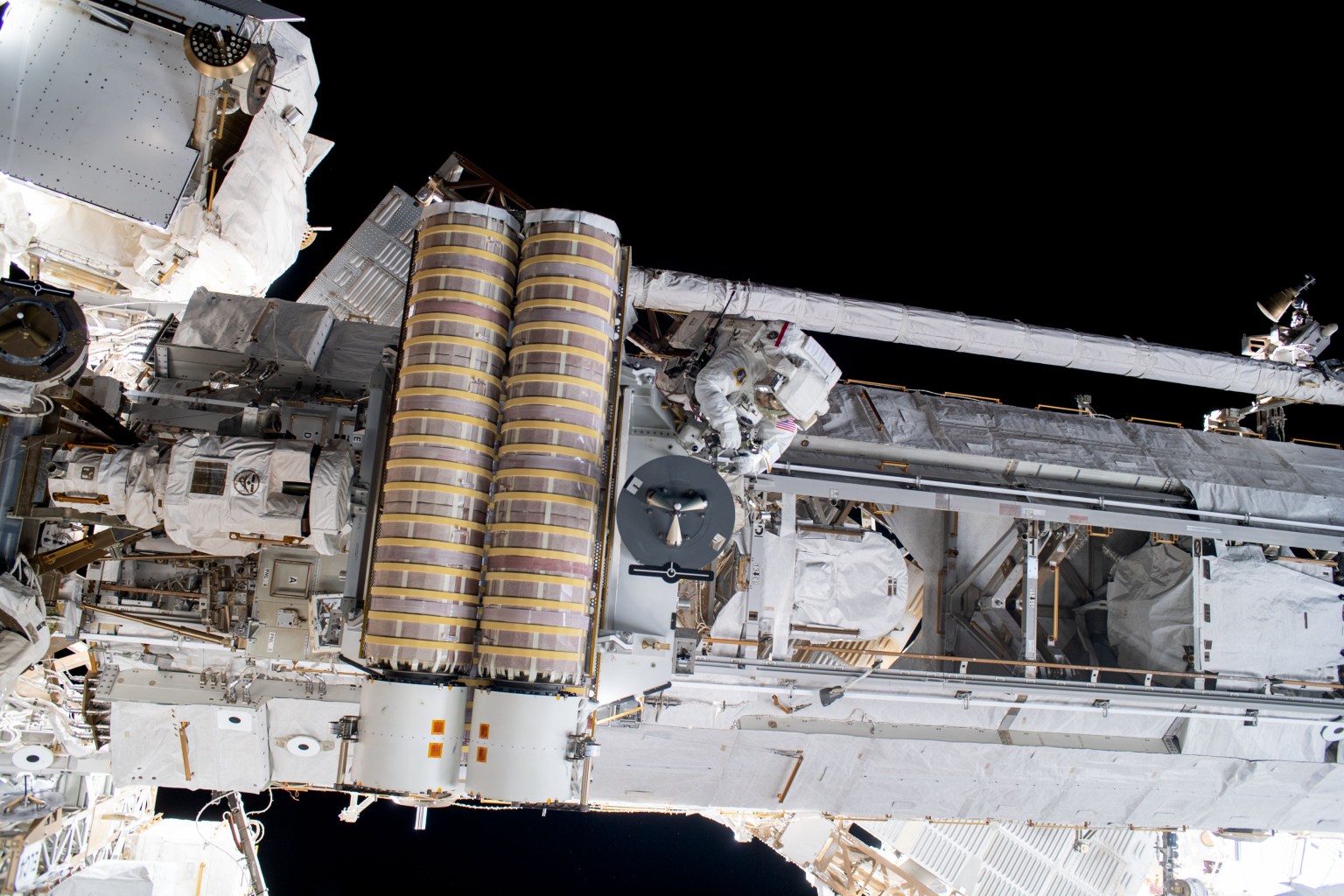
NASA
Roll-Out Solar Arrays 3A/4A
Launched on Nov. 26, 2022. Installed on Dec. 3 and 22, 2022.
The roll-out siolar arrays augment the International Space Station’s eight main solar arrays. They produce more than 20 kilowatts of electricity and enable a 30% increase in power production over the station’s current arrays.
Learn more about the Roll-Out Solar Arrays about Roll-Out Solar Arrays 3A/4A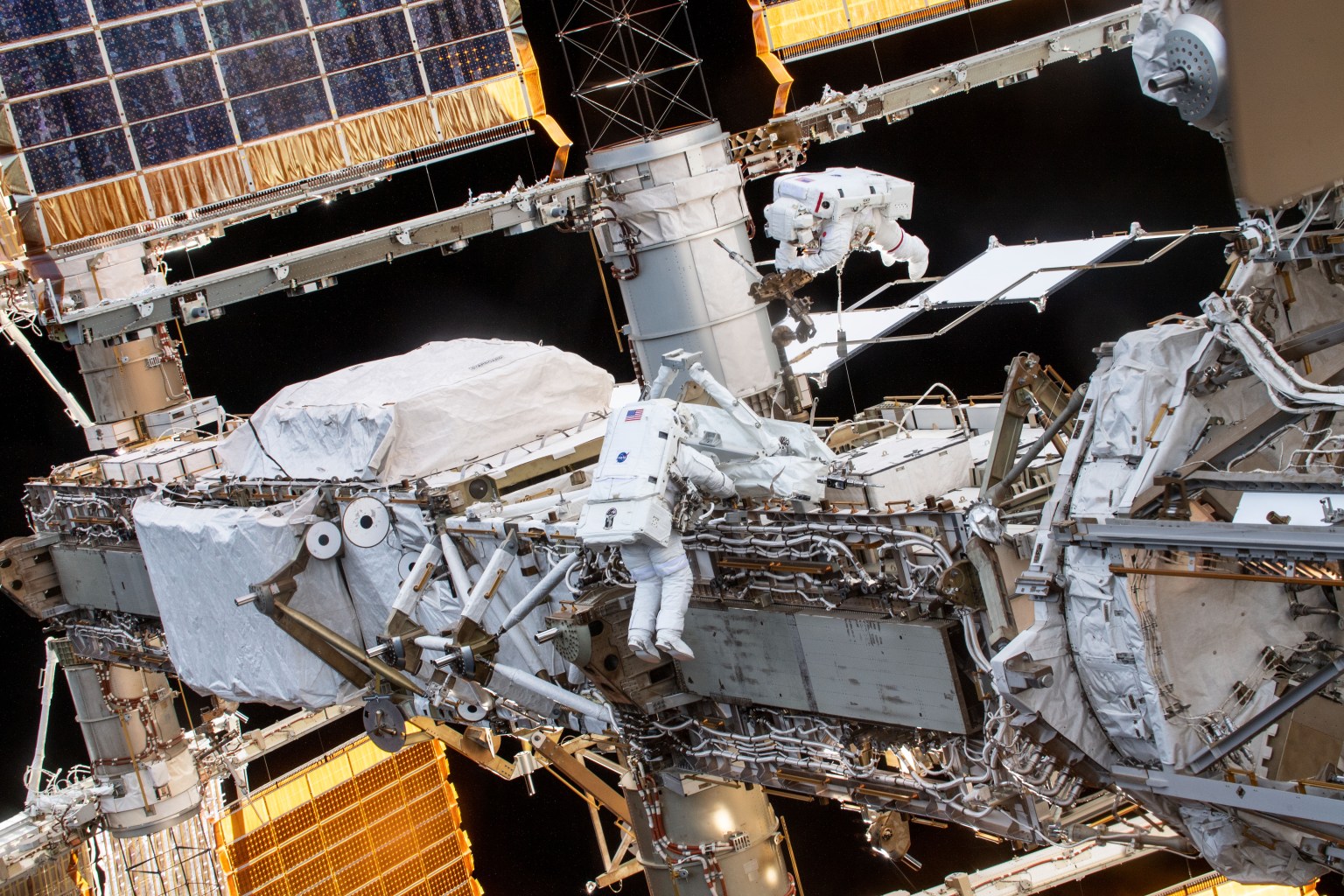
Roscosmos
Prichal Docking Module
Launched on Nov. 24, 2021. Installed on Nov. 26, 2021.
Prichal, named for the Russian word for pier, has five available docking ports to accommodate Russian spacecraft and provide fuel transfer capability to the Nauka multipurpose laboratory module.
Learn more about Prichal about Prichal Docking Module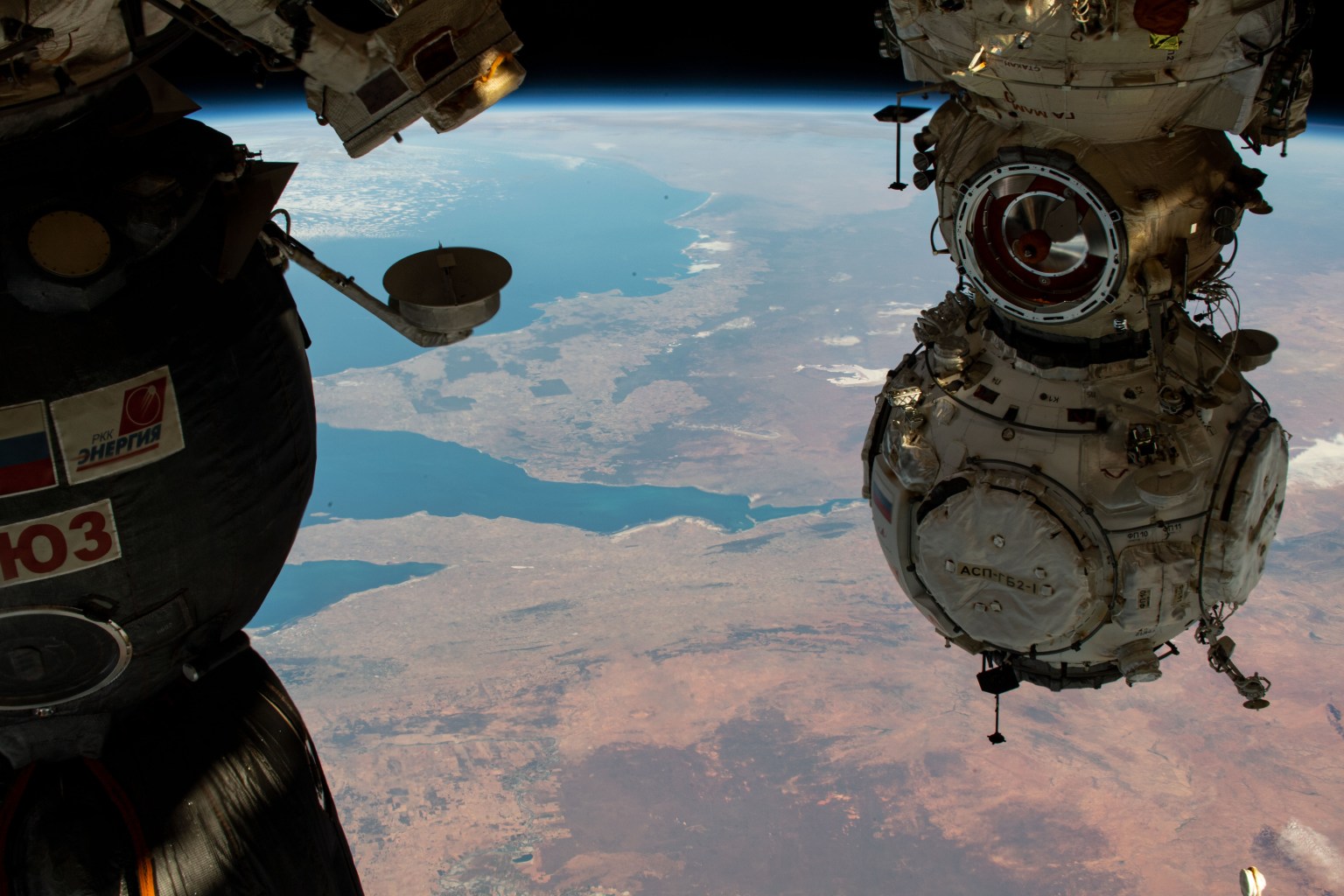
Roscosmos
Nauka Multipurpose Laboratory Module
Launched on July 21, 2021. Installed on July 29, 2021.
Nauka, the Russian word for “science,” is a the 43-foot long, 23-ton module that serves as a new science facility on the Roscosmos segment of the International Space Station.
Learn more about Nauka about Nauka Multipurpose Laboratory Module
NASA
Roll-Out Solar Arrays 2B/4B
Launched on June 3, 2021. Installed on June 16 and 25, 2021.
The roll-out siolar arrays augment the International Space Station’s eight main solar arrays. They produce more than 20 kilowatts of electricity and enable a 30% increase in power production over the station’s current arrays.
Learn more about the Roll-Out Solar Arrays about Roll-Out Solar Arrays 2B/4B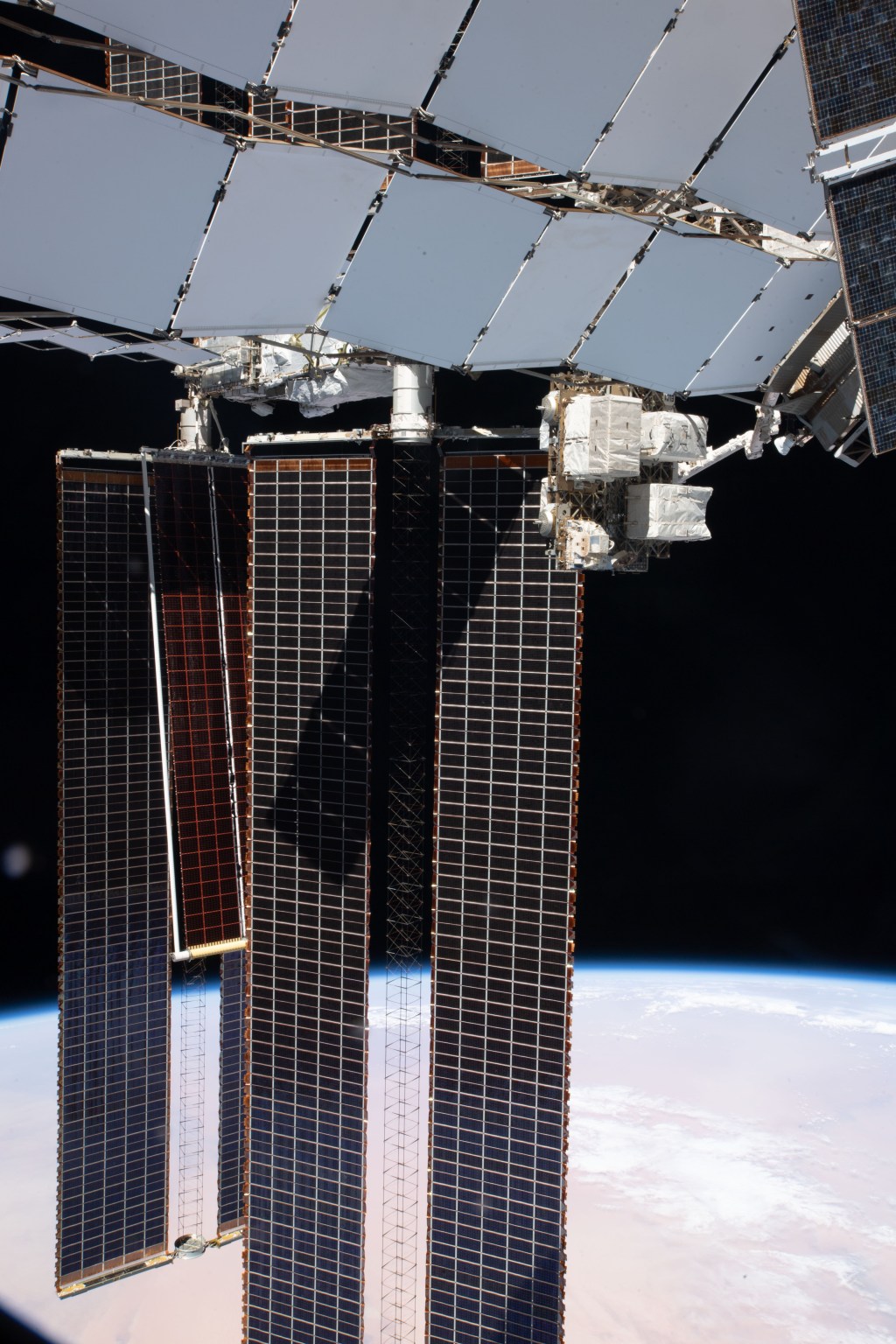
NanoRacks
NanoRacks Bishop Airlock
Launched on Dec. 6, 2020. Installed on Dec. 19, 2020.
Bishop significantly increases the capacity for public and private research on the outside of the orbiting lab. The new science airlock also enables the deployment of larger satellites and the transfer of spacewalking tools and hardware inside and outside the station.
Learn more about Bishop about NanoRacks Bishop Airlock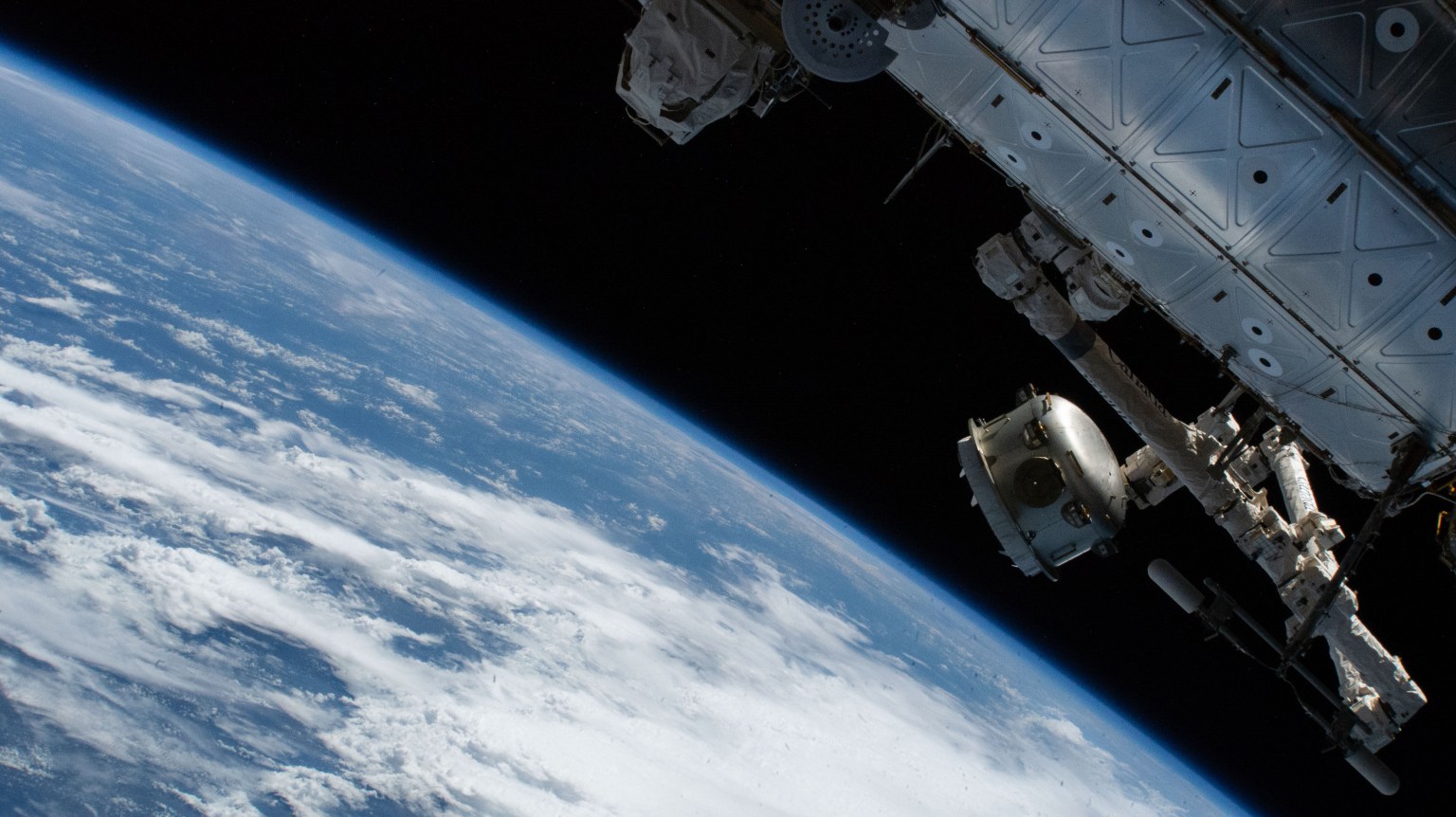
Bigelow
Bigelow Expandable Activity Module (BEAM)
Launched on April 8, 2016. Installed on April 16, 2016.
BEAM is an experimental habitat that is lower in mass and volume than metal habitats and can increase the efficiency of cargo shipments, possibly reducing the number of launches needed and overall mission costs.
Learn more about BEAM about Bigelow Expandable Activity Module (BEAM)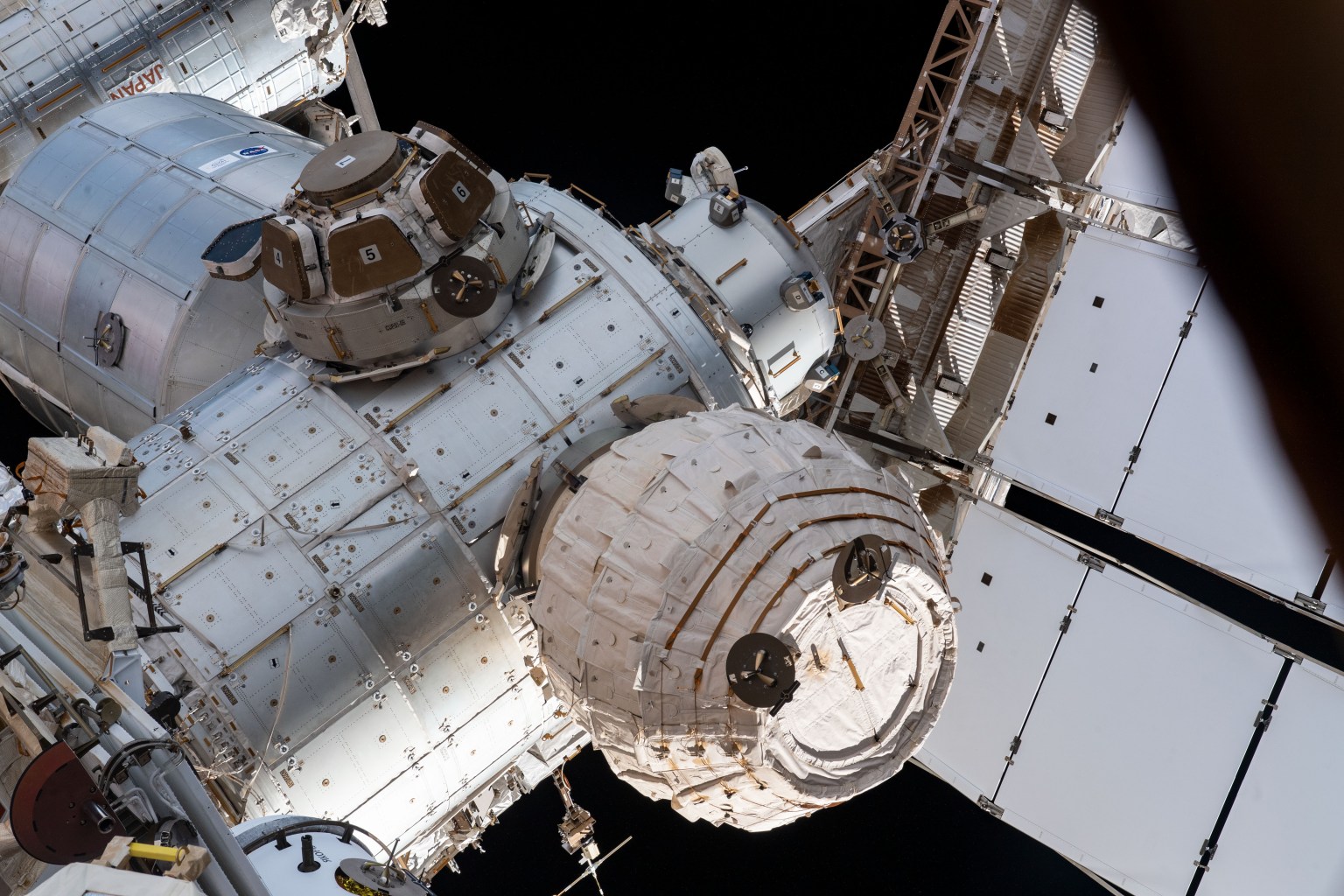
NASA
Alpha Magetic Spectrometer (AMS-2)
Launched on May 16, 2011. Installed on May 19, 2011.
The Alpha Magnetic Spectrometer (AMS-02) has collected and analyzed billions of cosmic ray events, and identified 9 million of these as electrons or positrons (antimatter).
Learn more about the AMS-2 about Alpha Magetic Spectrometer (AMS-2)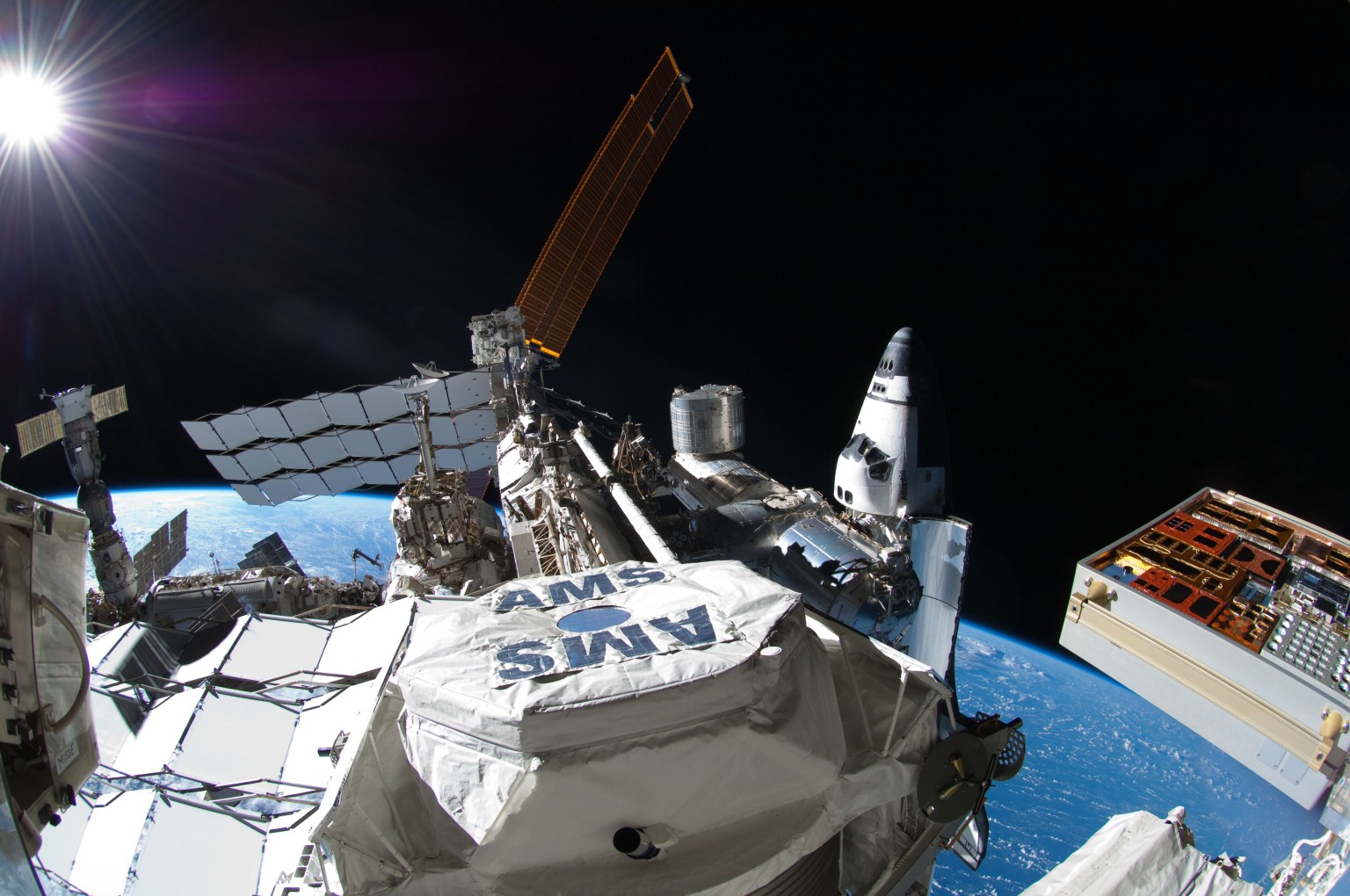
AEB (Brazilian Space Agency)
EXPRESS Logistics Carrier-3 (ELC-3)
Launched on May 16, 2011. Installed on May 18, 2011.
The EXpedite the PRocessing of Experiments to Space Station (EXPRESS) Logistics Carrier (ELC) is a platform designed to support external payloads mounted to the International Space Station’s starboard and port trusses.
Learn more about the ELCs about EXPRESS Logistics Carrier-3 (ELC-3)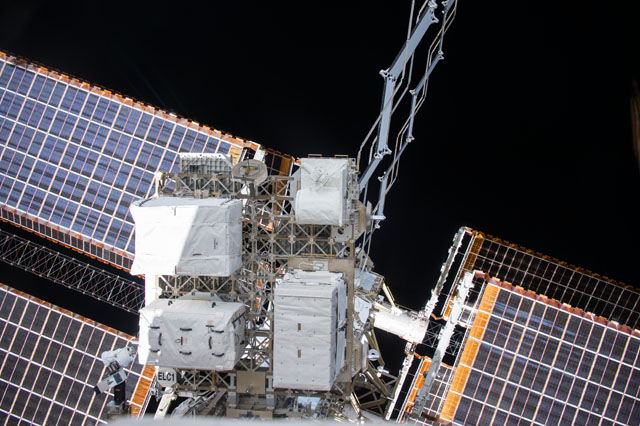
ESA (European Space Agency)
Permanent Multipurpose Module (PMM)
Launched on Feb. 24, 2011. Installed on March 1, 2011.
The Italian-built Permanent Multipurpose Module (PMM) provides space for cargo storage and scientific usage.
Learn more about the PMM about Permanent Multipurpose Module (PMM)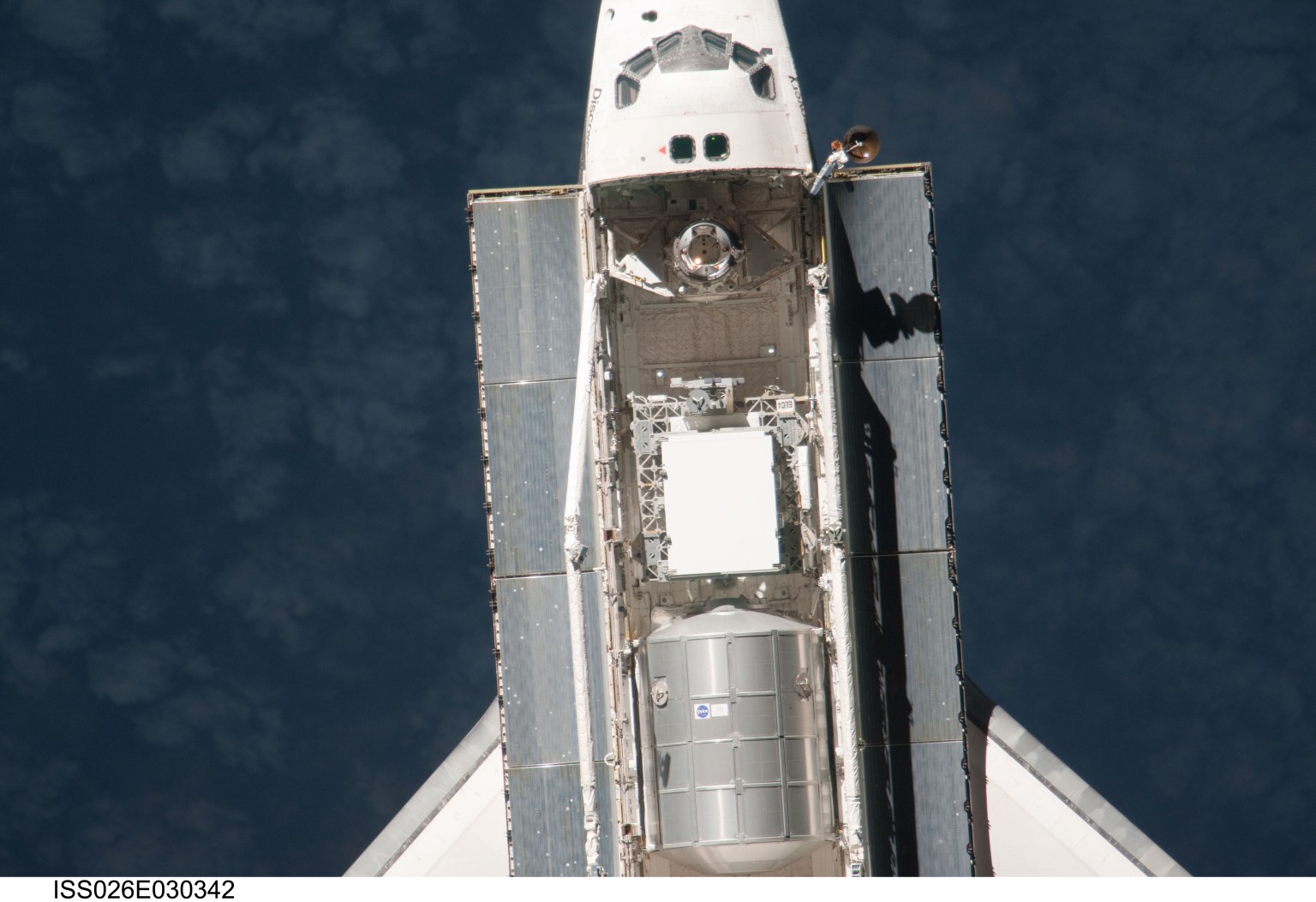
AEB (Brazilian Space Agency)
EXPRESS Logistics Carrier-4 (ELC-4)
Launched on Feb. 24, 2011. Installed on Feb. 26, 2011.
The EXpedite the PRocessing of Experiments to Space Station (EXPRESS) Logistics Carrier (ELC) is a platform designed to support external payloads mounted to the International Space Station’s starboard and port trusses.
Learn more about the ELCs about EXPRESS Logistics Carrier-4 (ELC-4)
Roscosmos
Rassvet Mini-Research Module-1
Launched on May 14, 2010. Installed on May 18, 2010.
Rassvet, Russian for “dawn”, is used primarily for cargo storage and payload operations while providing a docking port on the Roscosmos segment of the orbital outpost.
Learn more about Rassvet about Rassvet Mini-Research Module-1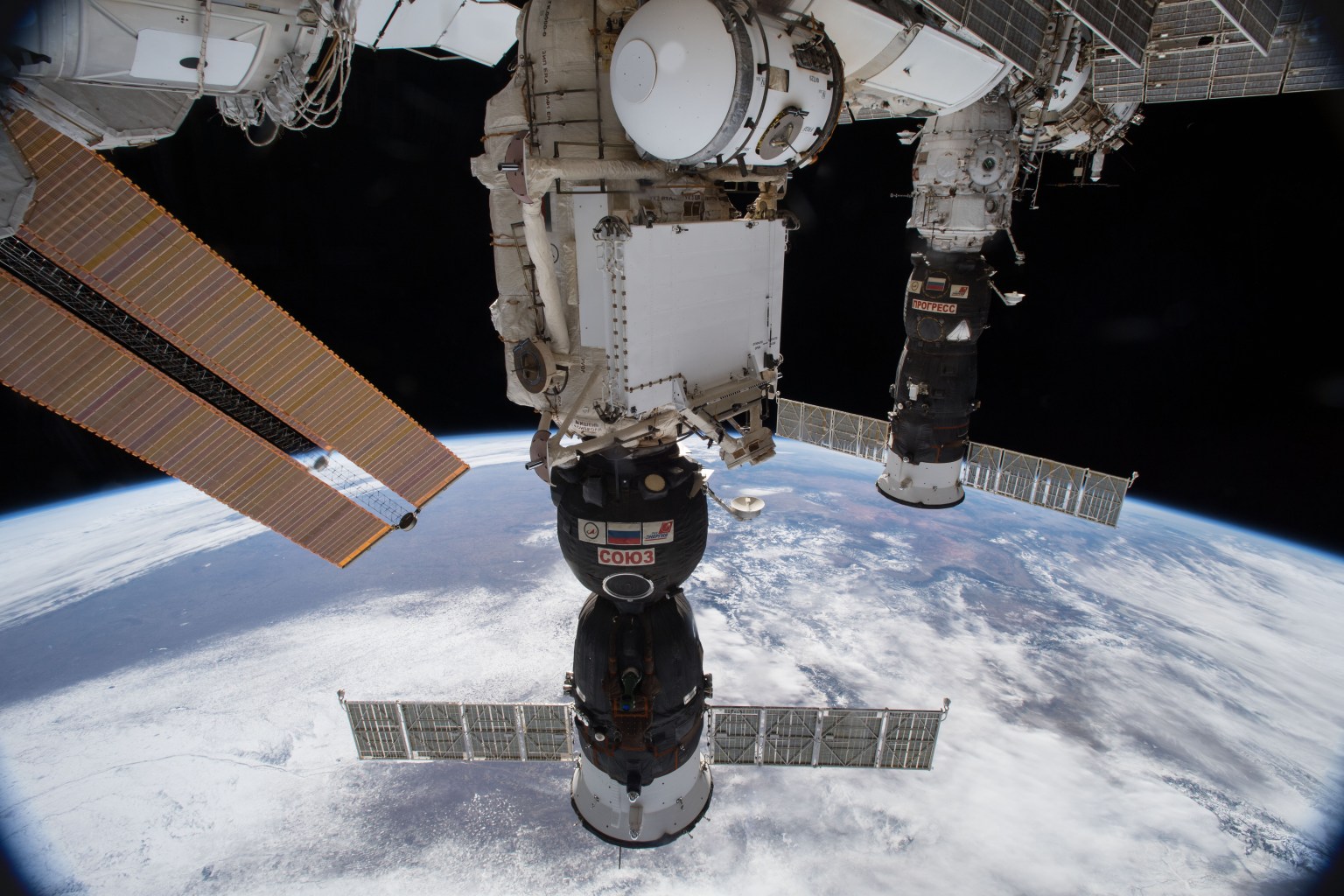
NASA
Cupola
Launched on Feb. 8, 2010. Installed on Feb. 15, 2010.
The cupola, the International Space Station’s “window to the world,” offers views from seven different windows for Earth observations and monitoring of mission activities including robotics, spacecraft arrivals and departures, and spacewalks.
Learn more about the cupola about Cupola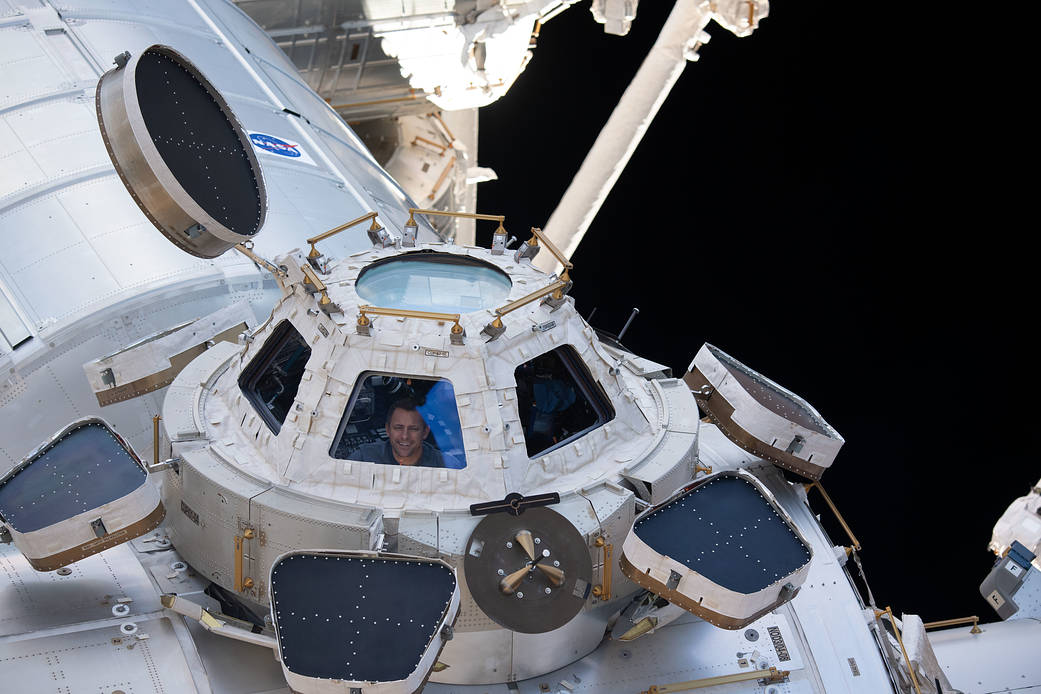
ESA (European Space Agency)
Tranquility Module
Launched on Feb. 8, 2010. Installed on Feb. 12, 2010.
The Tranquility module provides station crews life support systems, a bathroom, and exercise facilities, as well as access to the cupola, the Bishop airlock, BEAM, and the Permanent Multipurpose Module.
Learn more about Tranquility about Tranquility Module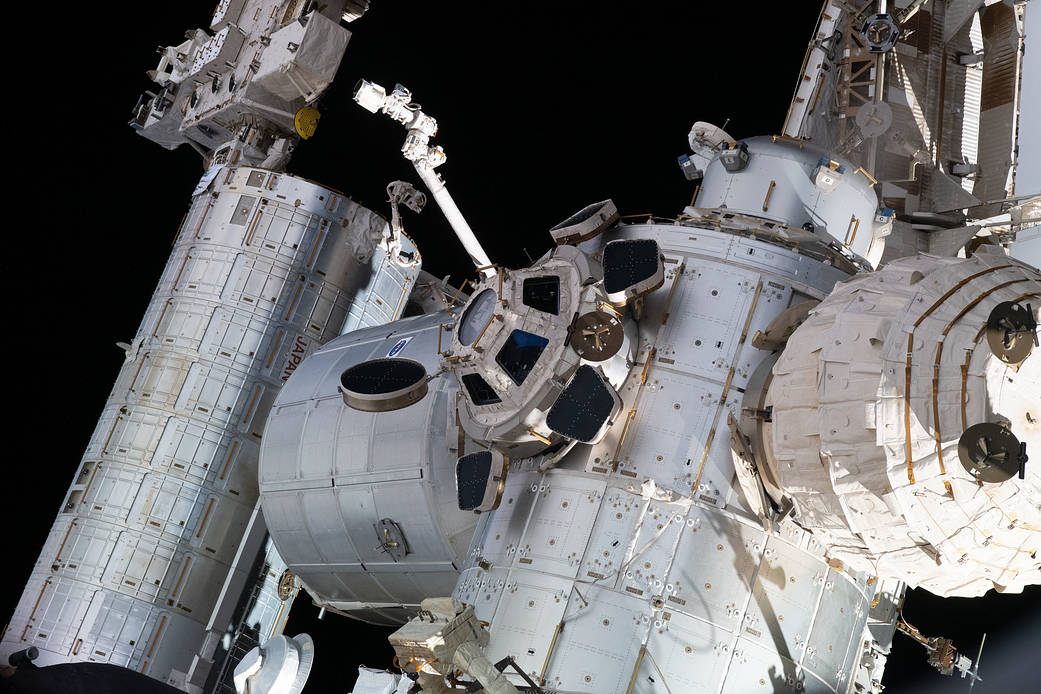
AEB (Brazilian Space Agency)
EXPRESS Logistics Carrier-2 (ELC-2)
Launched on Nov. 16, 2009. Installed on Nov. 21, 2009.
The EXpedite the PRocessing of Experiments to Space Station (EXPRESS) Logistics Carrier (ELC) is a platform designed to support external payloads mounted to the International Space Station’s starboard and port trusses.
Learn more about the ELCs about EXPRESS Logistics Carrier-2 (ELC-2)
AEB (Brazilian Space Agency)
EXPRESS Logistics Carrier-1 (ELC-1)
Launched on Nov. 16, 2009. Installed on Nov. 18, 2009.
The EXpedite the PRocessing of Experiments to Space Station (EXPRESS) Logistics Carrier (ELC) is a platform designed to support external payloads mounted to the International Space Station’s starboard and port trusses.
Learn more about the ELCs about EXPRESS Logistics Carrier-1 (ELC-1)
Roscosmos
Poisk Mini-Research Module-2
Launched on Nov. 10, 2009. Installed on Nov. 12, 2009.
Poisk provides a port for Soyuz crew ships and Progress cargo vehicles and contains an airlock to prepare for and stage spacewalks. Poisk also offers extra space for scientific experiments and power supplies.
Learn more about Poisk about Poisk Mini-Research Module-2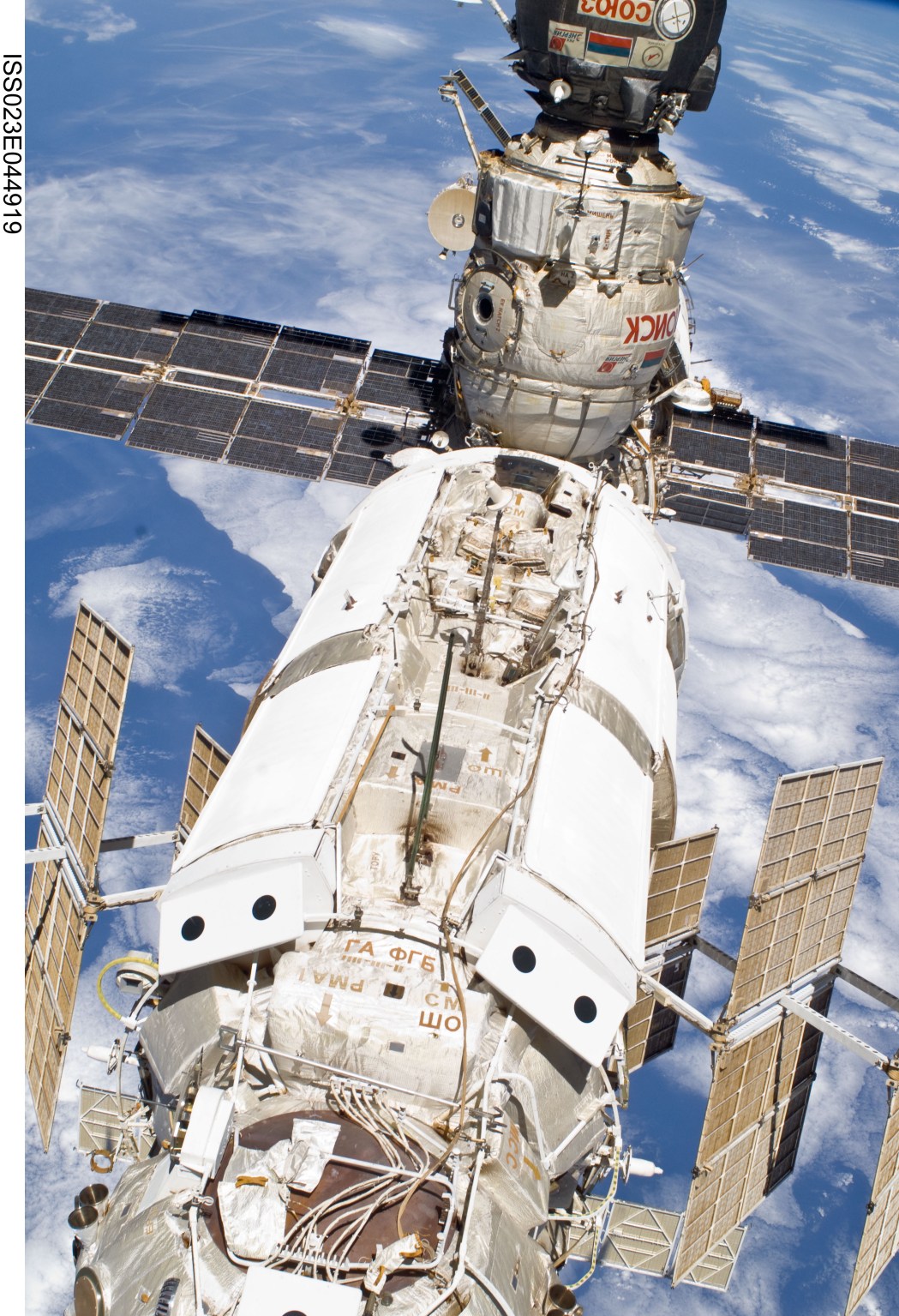
JAXA (Japan Aerospace Exploration Agency)
Japanese Exposed Facility
Launched on July 15, 2009. Installed on July 18, 2009.
The Japanese Exposed Facility is located outside Kibo where experiments are placed in the vacuum of space for a variety of investigations including Earth observations, technology demonstrations, and materials physics.
Learn more about the Japanese Exposed Facility about Japanese Exposed Facility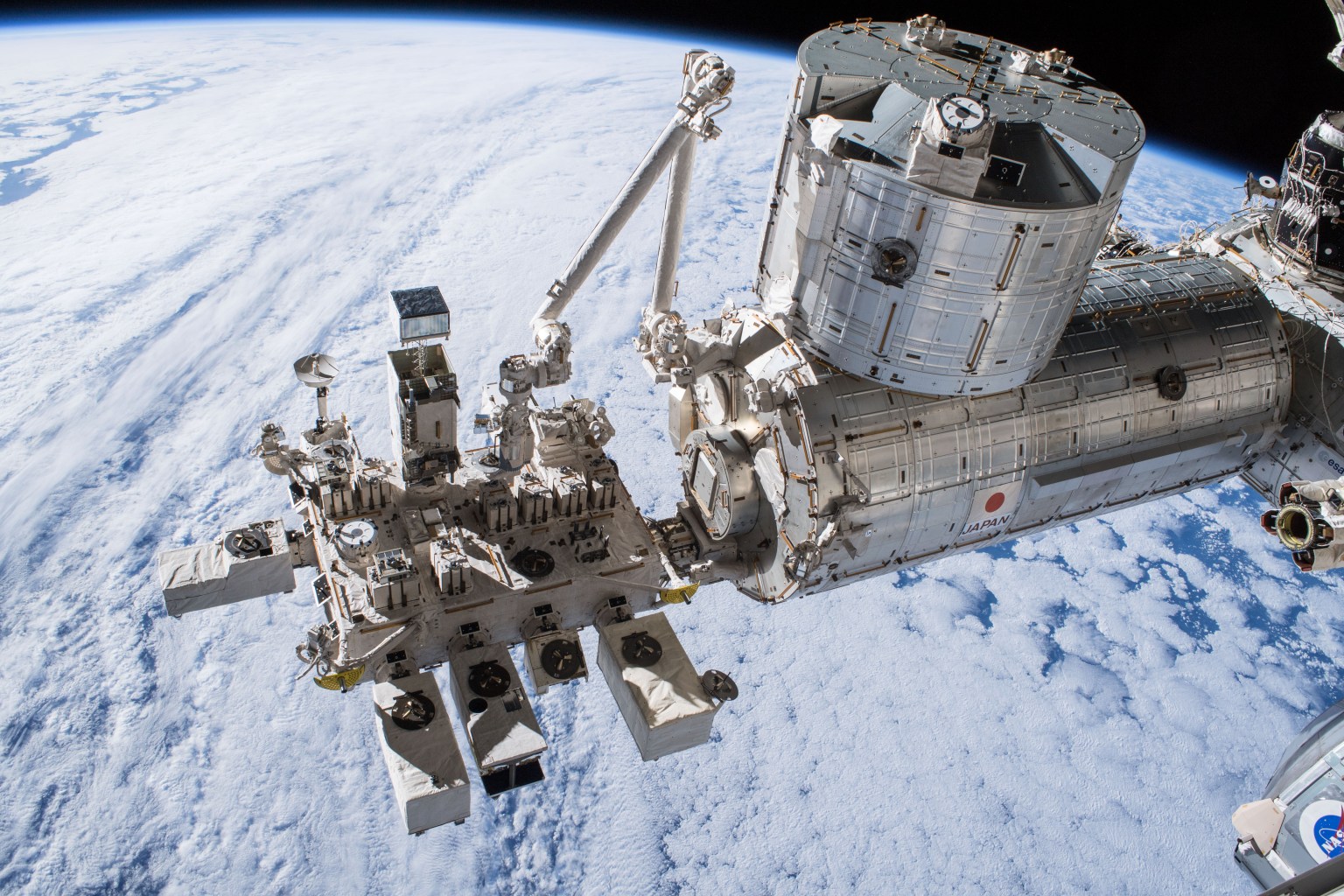
NASA
S6 (Starboard) Truss Spacer and Solar Arrays
Launched on March 15, 2009. Installed on March 19, 2009.
The Integrated Truss Structure is made up of 11 segments, plus a separate component called Zenith-1 (Z1), that are attachment points for the solar arrays, thermal control radiators, and external payloads on the International Space Station.
Learn more about the trusses and solar arrays about S6 (Starboard) Truss Spacer and Solar Arrays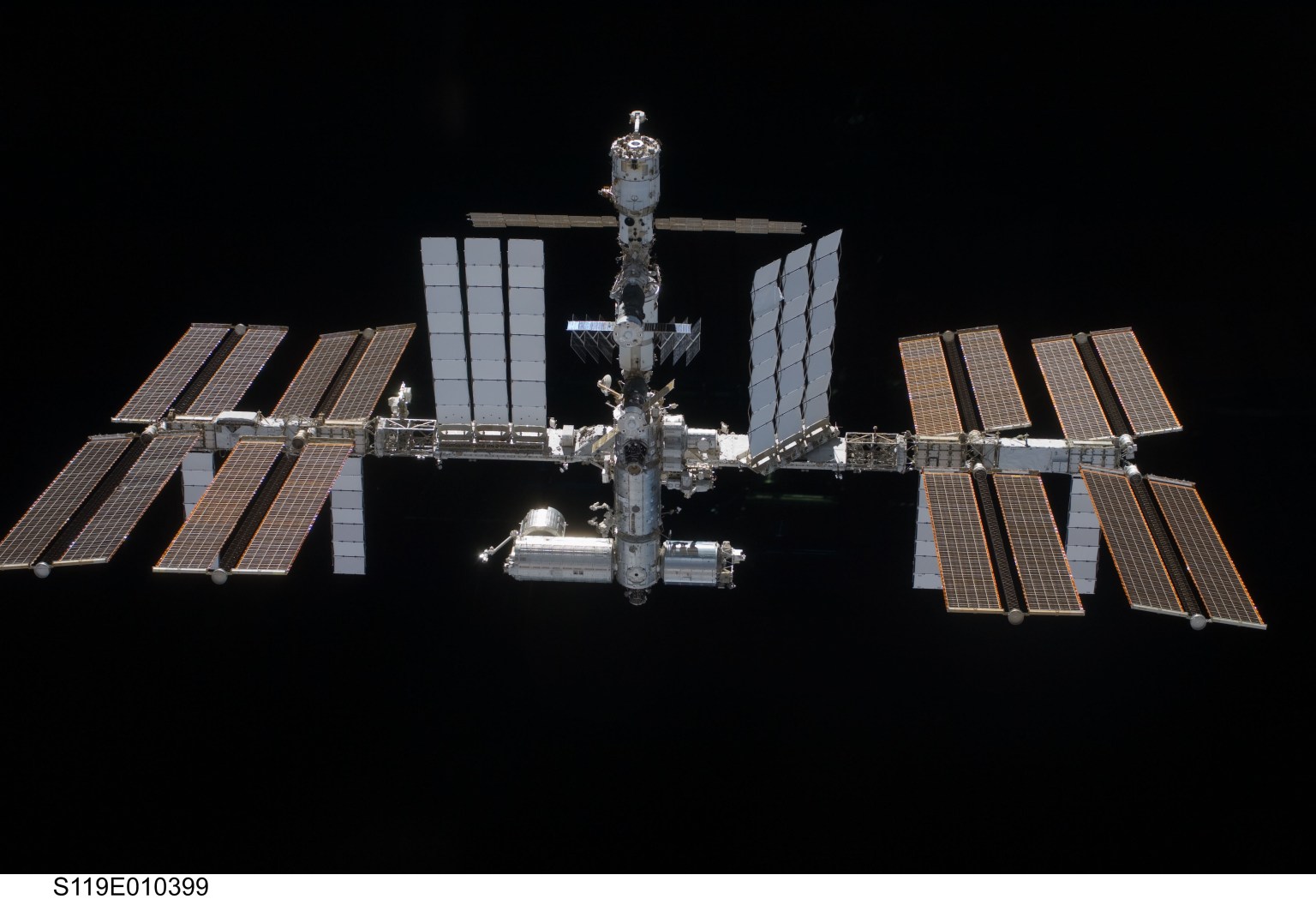
JAXA (Japan Aerospace Exploration Agency)
Japanese Experiment Module Kibo
Launched on May 31, 2008. Installed on June 3, 2008.
Kibo, Japanese for “hope,” is a space research facility enabling astronauts to investigate a variety of space phenomena. Experiments range from biology, physics, technology. and more and take place within Kibo’s numerous research racks. Kibo also provides an airlock allowing experiments to be exposed to the vacuum of space.
Learn more about Kibo about Japanese Experiment Module Kibo
CSA (Canadian Space Agency)
DEXTRE
Launched on March 11, 2008. Installed on March 18, 2008.
The Special Purpose Dexterous Manipulator, also known as Dextre, performs robotic maintenance like changing batteries and replacing cameras outside the International Space Station. The fine-tuned robotic hand’s precise handling capabilities reduces the need for time-consuming spacewalks providing astronauts more time to conduct science.
Learn more about Dextre about DEXTRE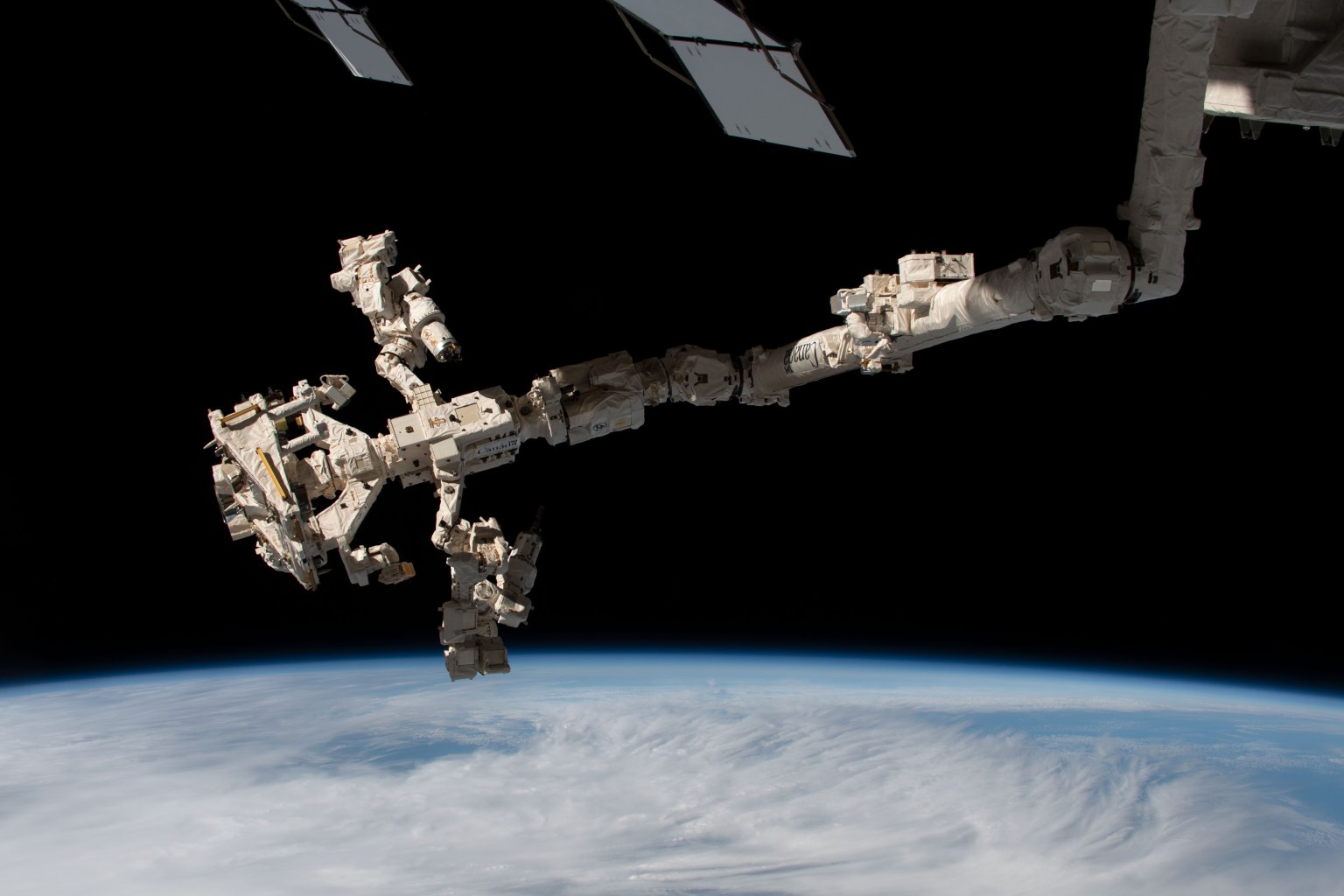
JAXA (Japan Aerospace Exploration Agency)
Japanese Logistics Module
Launched on March 11, 2008. Installed on March 14, 2008.
The Logistics Module serves as an on-orbit storage area that houses experiments, maintenance tools and supplies. It is attached to the top of the main pressurized section of Kibo.
Learn more about the Japanese Logistics Module about Japanese Logistics Module
ESA (European Space Agency)
Columbus Laboratory Module
Launched on Feb. 7, 2008. Installed on Feb. 11, 2008.
ESA’s (European Space Agency) Columbus laboratory module allows station crew members to conduct a wide variety of research in a weightless environment. Columbus also accommodates external payloads in space science, Earth observation, and technology.
Learn more about Columbus about Columbus Laboratory Module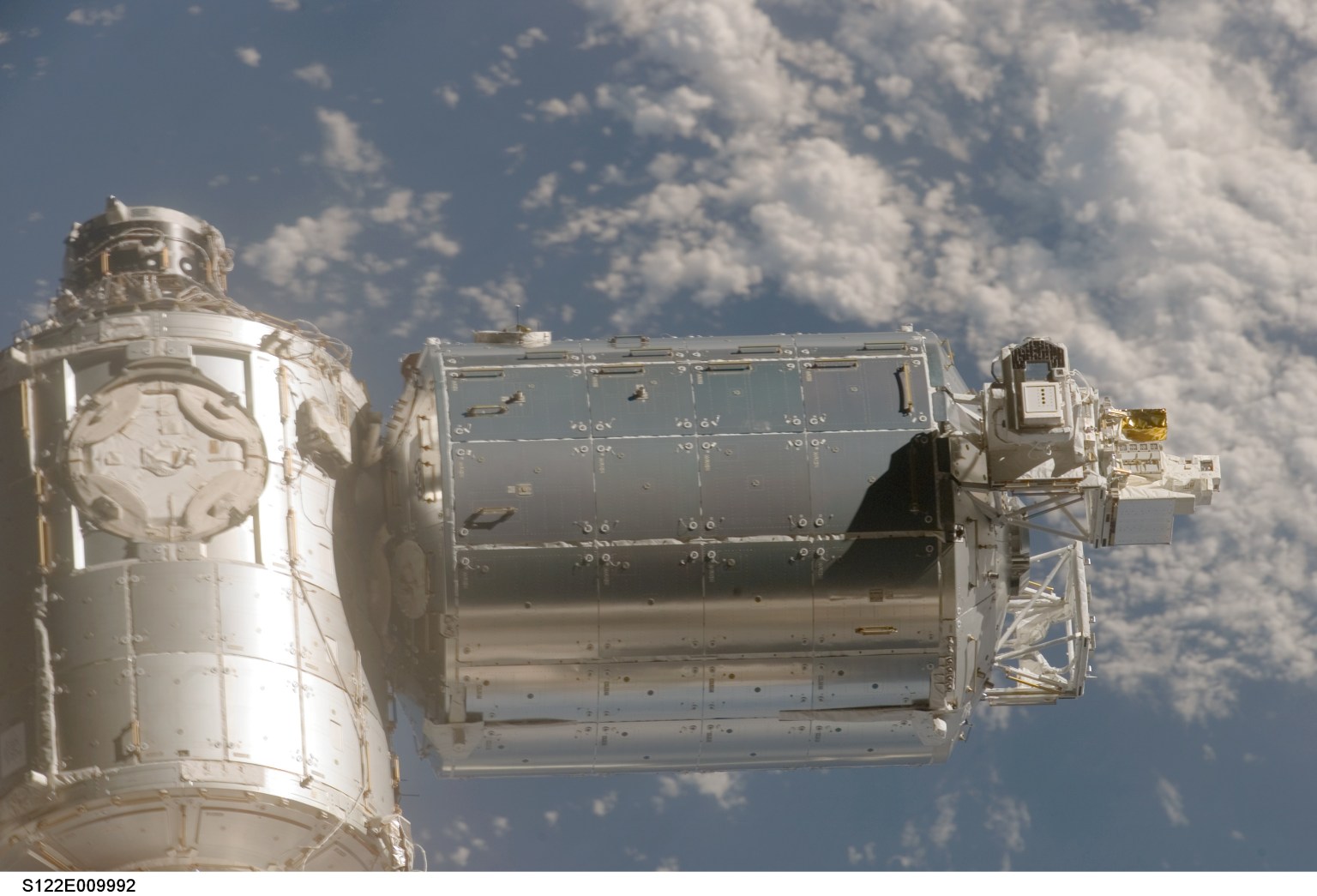
ESA (European Space Agency)
Harmony Module
Launched on Oct. 23, 2007. Installed on Oct. 26, 2007.
The Harmony module acts provides living and working space for astronauts, acts as a passageway to international lab modules, and offers docking ports for commercial crew and cargo vehicles.
Learn more about Harmony about Harmony Module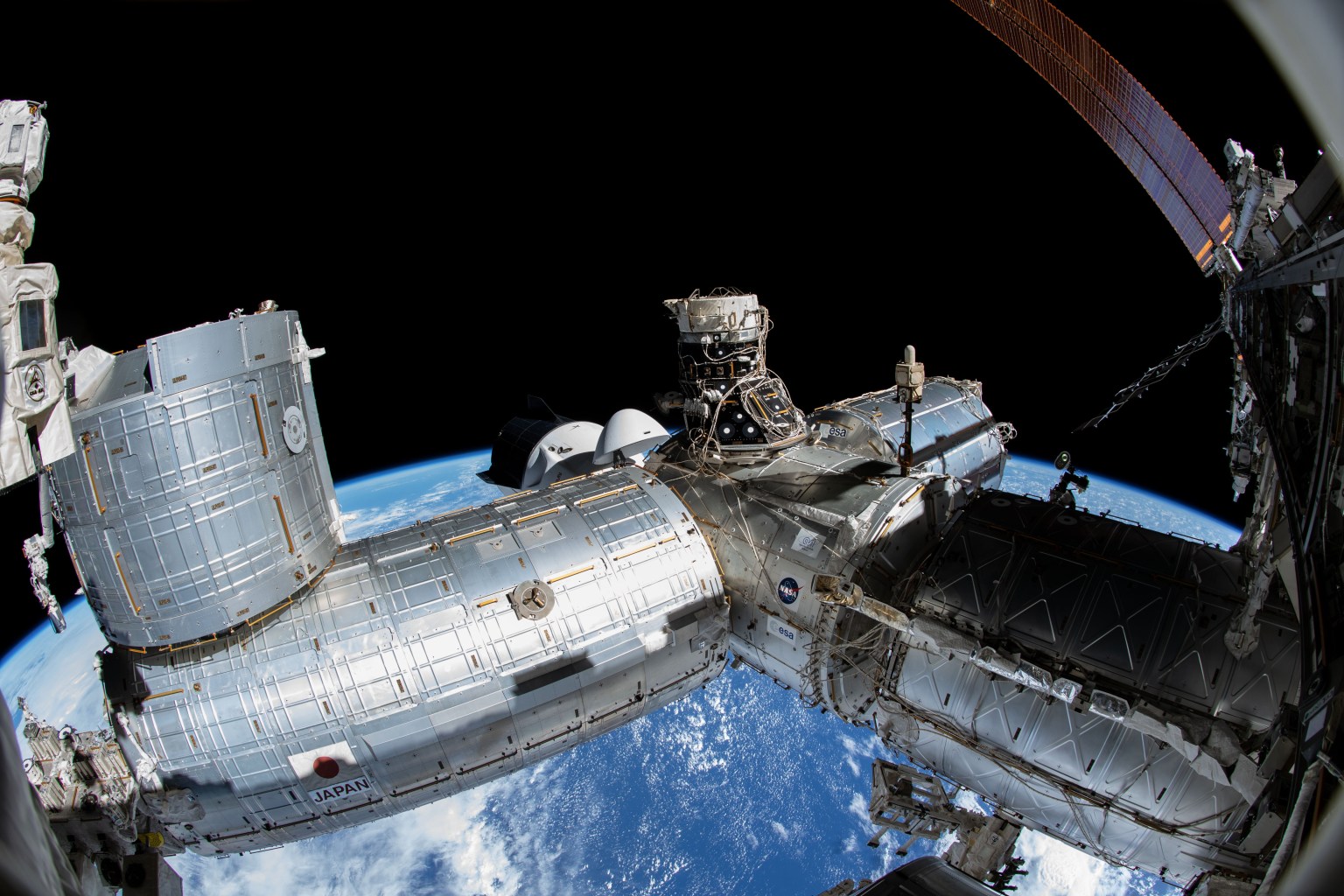
NASA
S5 (Starboard) Truss Spacer
Launched on Aug. 8, 2007. Installed on Aug. 14, 2007.
The Integrated Truss Structure is made up of 11 segments, plus a separate component called Zenith-1 (Z1), that are attachment points for the solar arrays, thermal control radiators, and external payloads on the International Space Station.
Learn more about the trusses and solar arrays about S5 (Starboard) Truss Spacer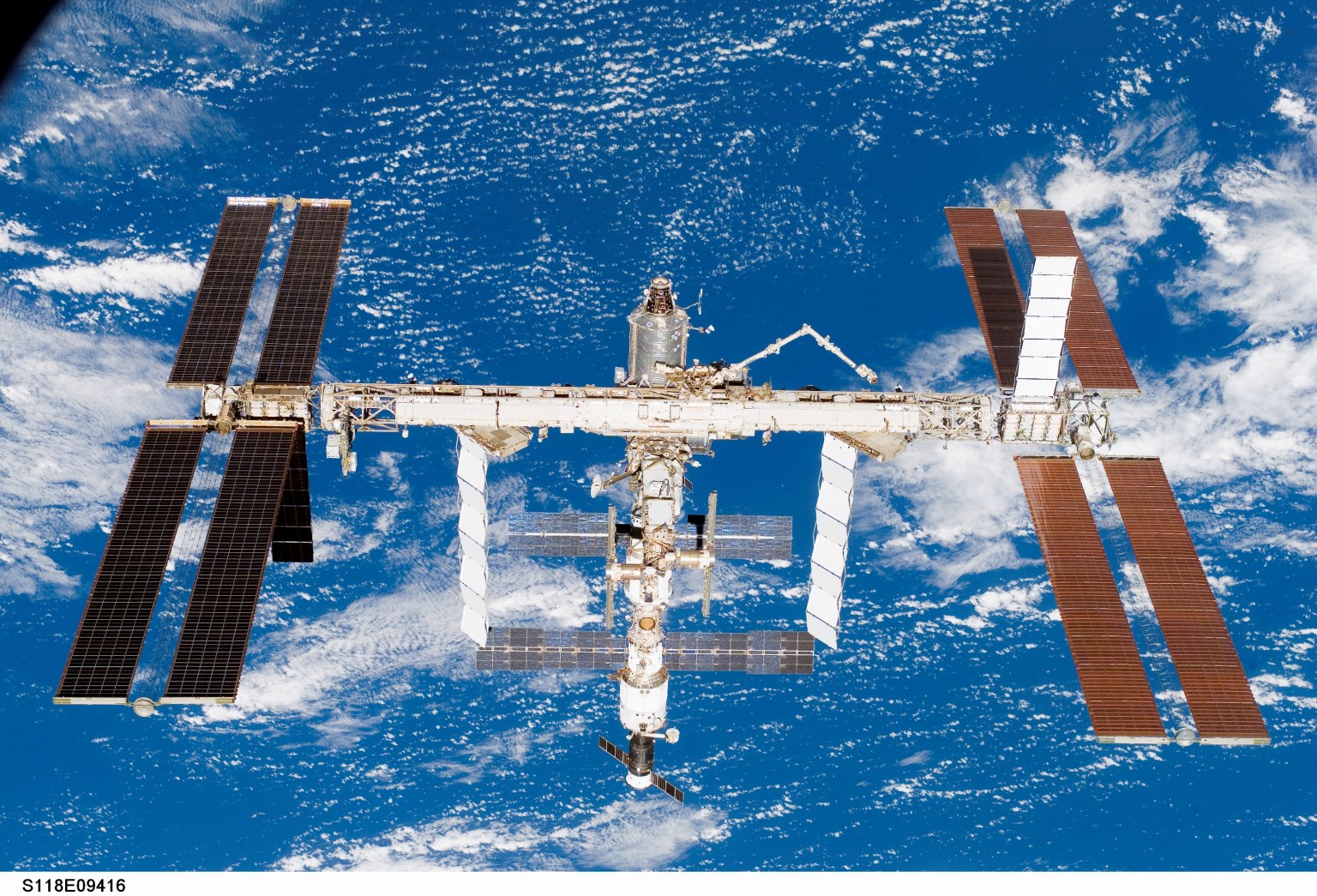
NASA
External Stowage Platform-3 (ESP-3)
Launched on Aug. 8, 2007. Installed on Aug. 14, 2007.
External Stowage Platforms (ESP) are external pallets that can hold spare parts on the International Space Station. The unpressurized ESPs require electricity to power the heaters of some of the stored equipment.
Learn more about the ESPs about External Stowage Platform-3 (ESP-3)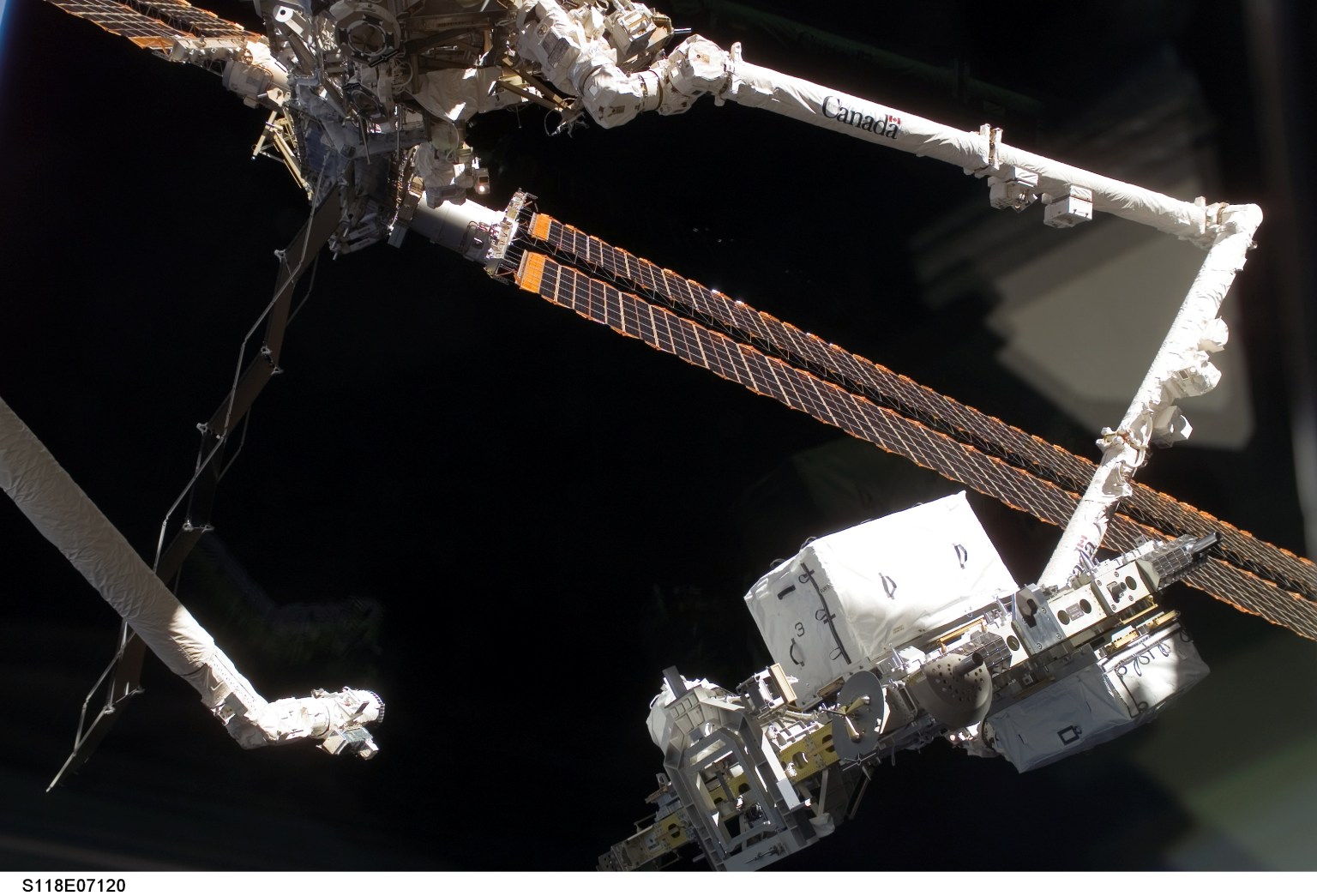
NASA
S3/S4 (Starboard) Truss and Solar Arrays
Launched on June 8, 2007. Installed on June 11, 2007.
The Integrated Truss Structure is made up of 11 segments, plus a separate component called Zenith-1 (Z1), that are attachment points for the solar arrays, thermal control radiators, and external payloads on the International Space Station.
Learn more about the trusses and solar arrays about S3/S4 (Starboard) Truss and Solar Arrays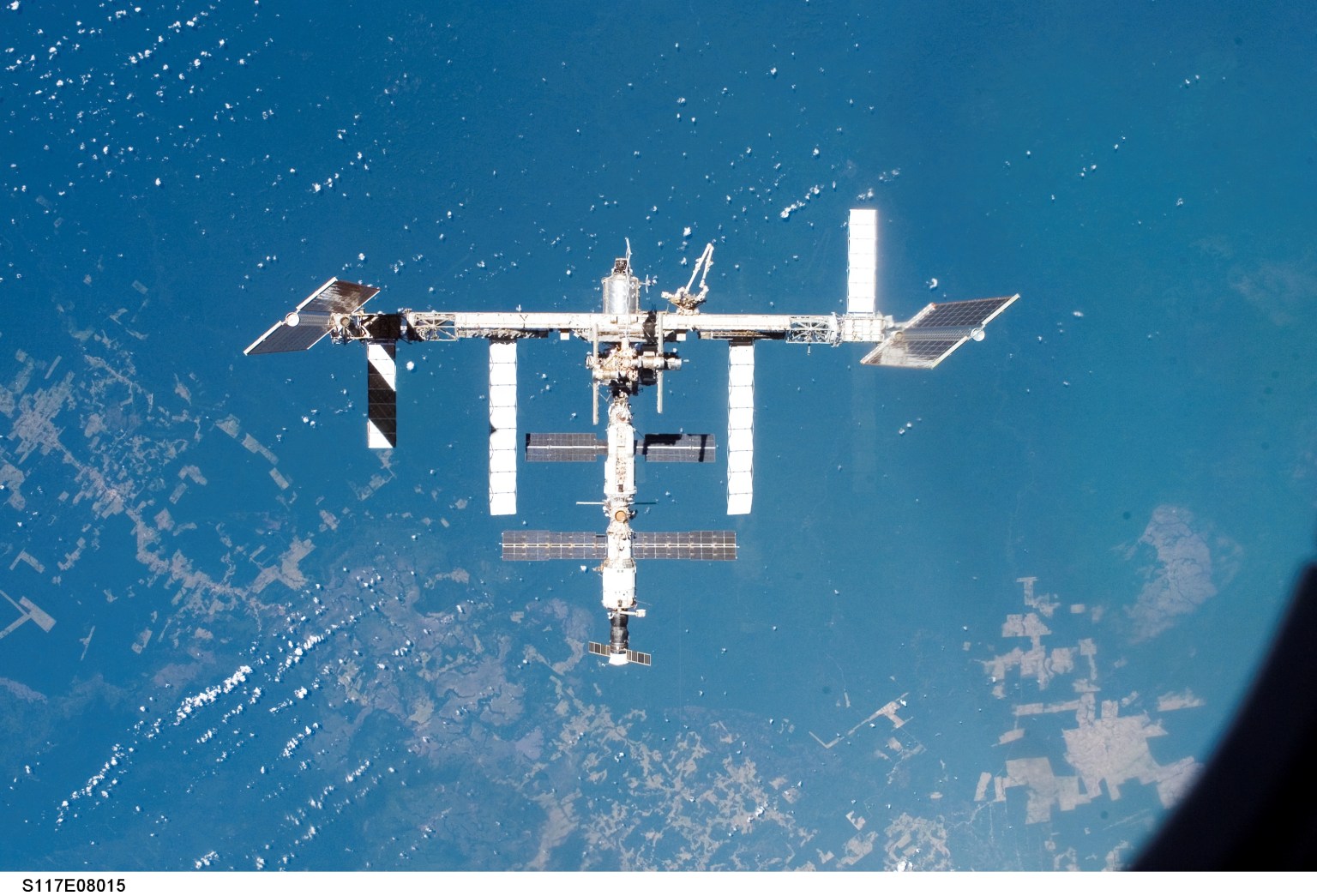
NASA
P5 (Port) Truss Spacer
Launched on Dec. 9, 2006. Installed on Dec. 11, 2006.
The Integrated Truss Structure is made up of 11 segments, plus a separate component called Zenith-1 (Z1), that are attachment points for the solar arrays, thermal control radiators, and external payloads on the International Space Station.
Learn more about the trusses and solar arrays about P5 (Port) Truss Spacer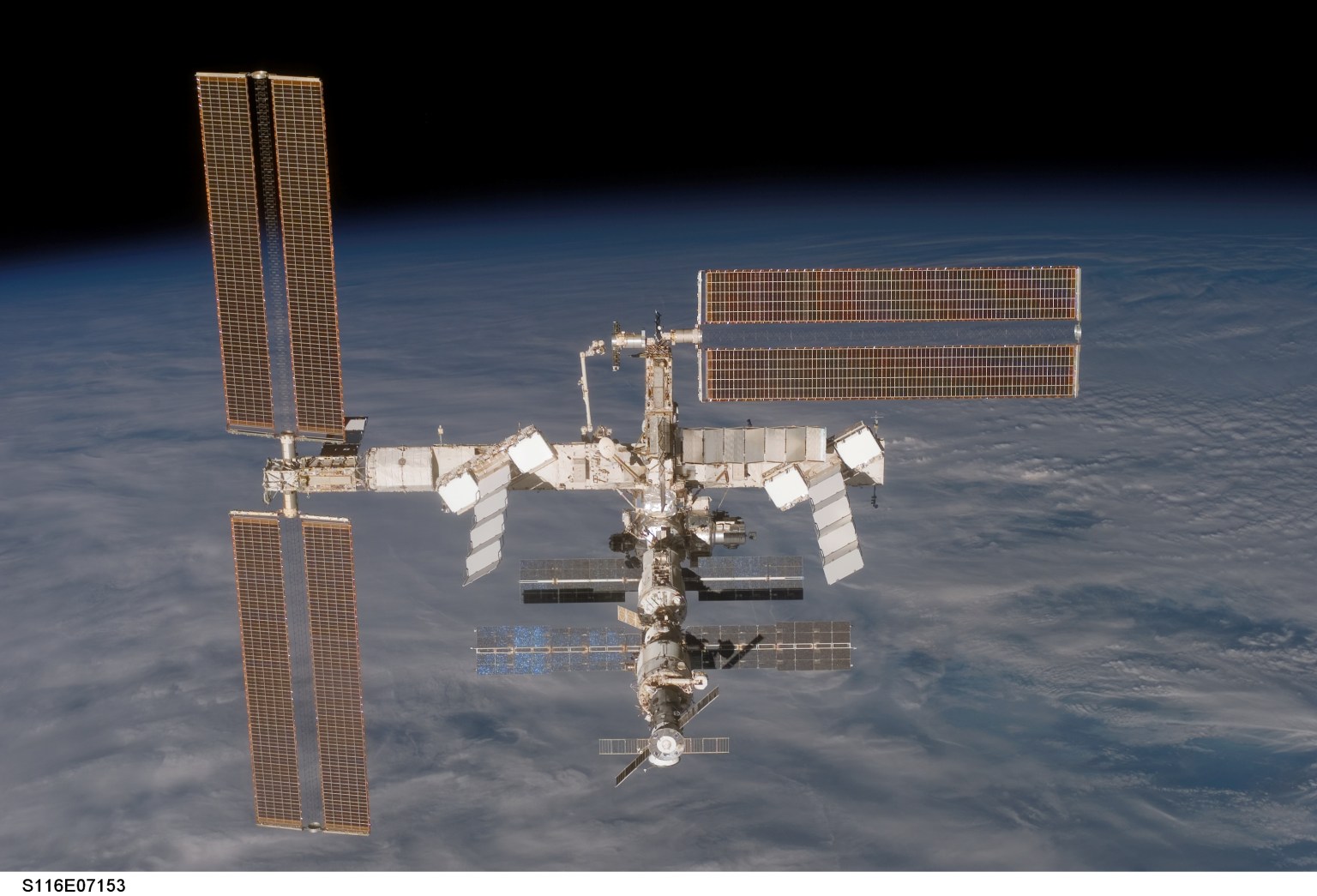
NASA
P3/P4 (Port) Truss and Solar Arrays
Launched on Sept. 9, 2006. Installed on Sept. 12, 2006.
The Integrated Truss Structure is made up of 11 segments, plus a separate component called Zenith-1 (Z1), that are attachment points for the solar arrays, thermal control radiators, and external payloads on the International Space Station.
Learn more about the trusses and solar arrays about P3/P4 (Port) Truss and Solar Arrays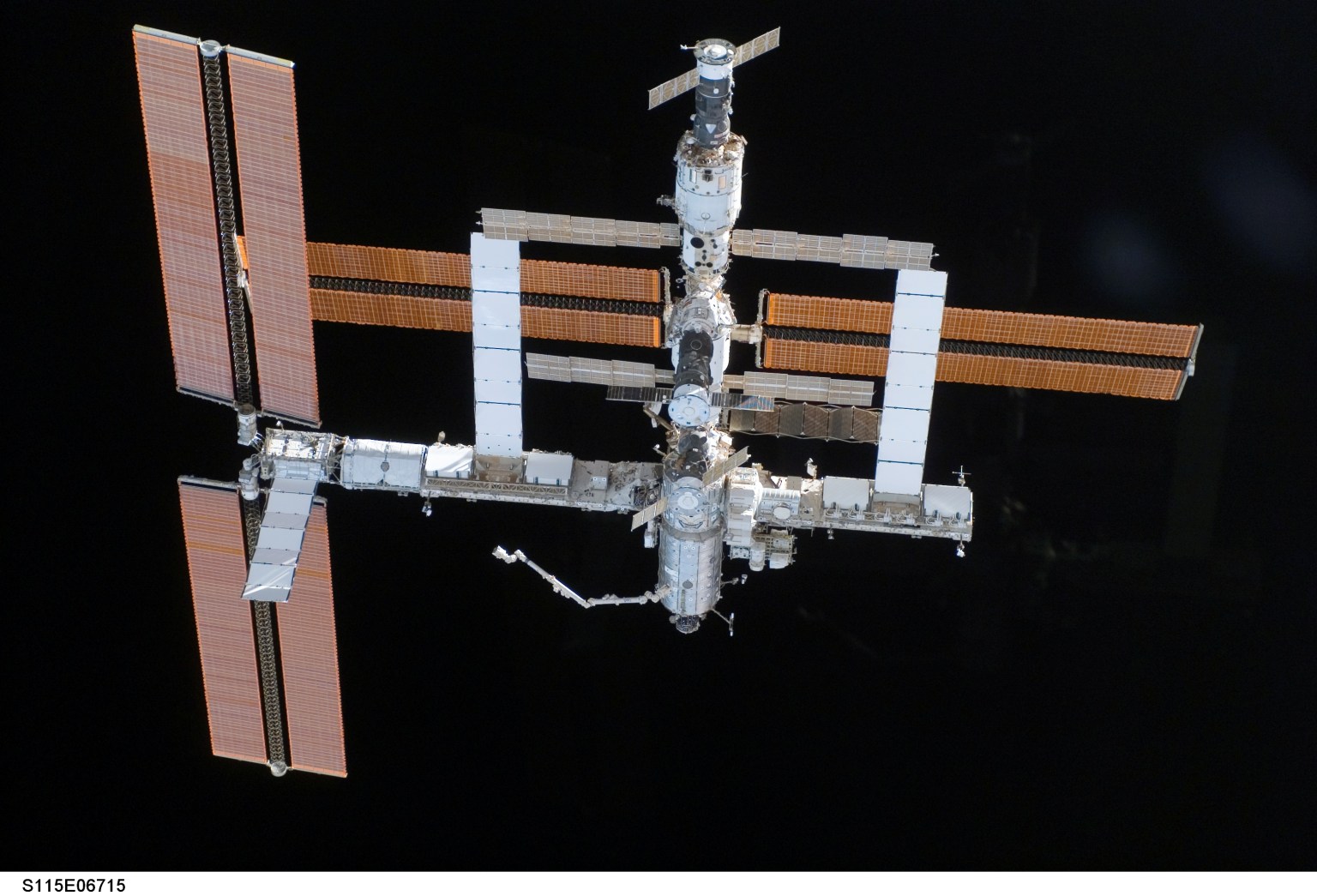
NASA
External Stowage Platform-2
Launched on July 26, 2005. Installed on July 30, 2005.
External Stowage Platforms (ESP) are external pallets that can hold spare parts on the International Space Station. The unpressurized ESPs require electricity to power the heaters of some of the stored equipment.
Learn more about the ESPs about External Stowage Platform-2
NASA
P1 (Port) Truss
Launched on Nov. 23, 2002. Installed on Nov. 26, 2002.
The Integrated Truss Structure is made up of 11 segments, plus a separate component called Zenith-1 (Z1), that are attachment points for the solar arrays, thermal control radiators, and external payloads on the International Space Station.
Learn more about the trusses and solar arrays about P1 (Port) Truss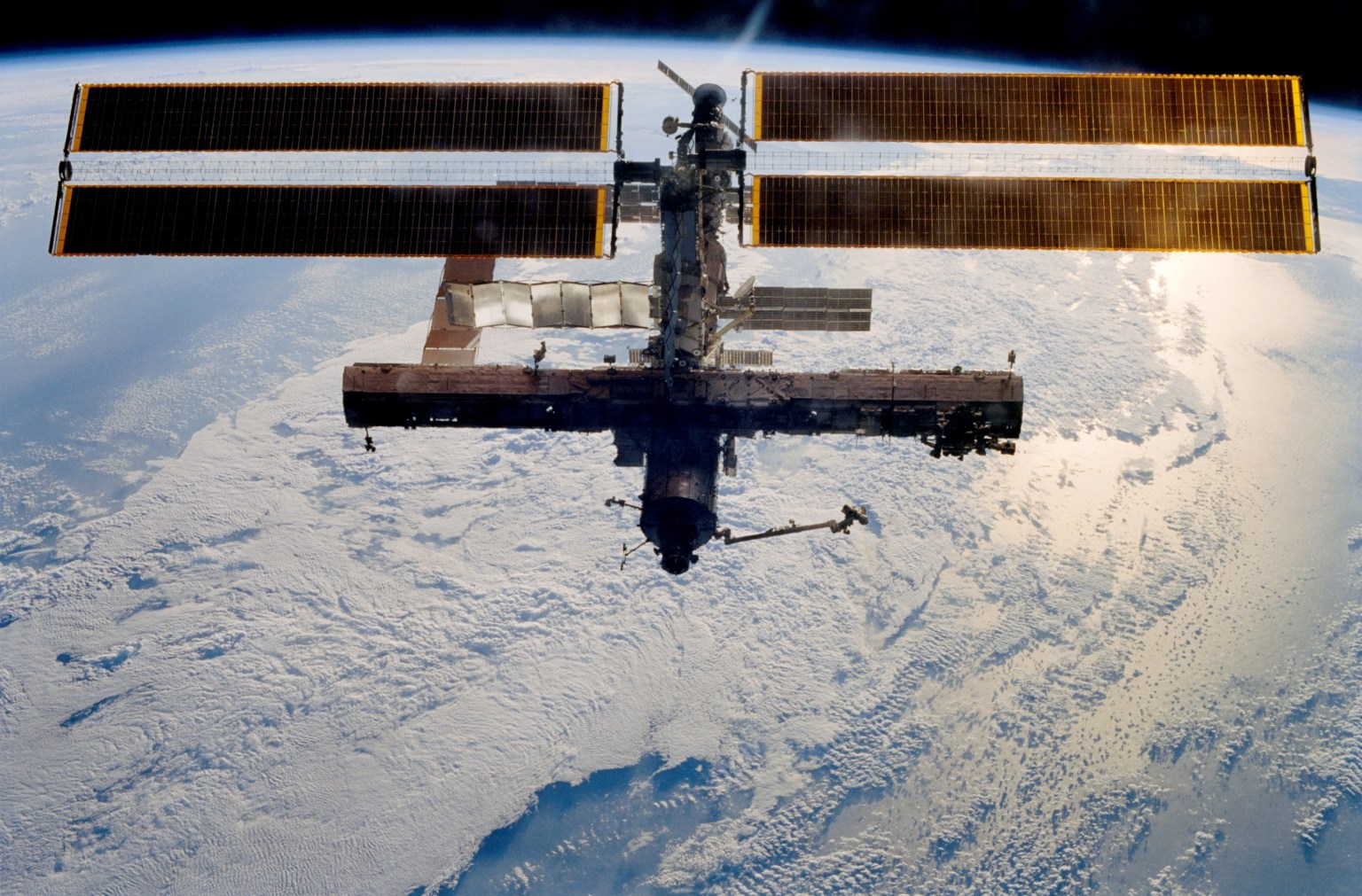
NASA
S1 (Starboard) Truss
Launched on Oct. 7, 2002. Installed on Oct. 10, 2002.
The Integrated Truss Structure is made up of 11 segments, plus a separate component called Zenith-1 (Z1), that are attachment points for the solar arrays, thermal control radiators, and external payloads on the International Space Station.
Learn more about the trusses and solar arrays about S1 (Starboard) Truss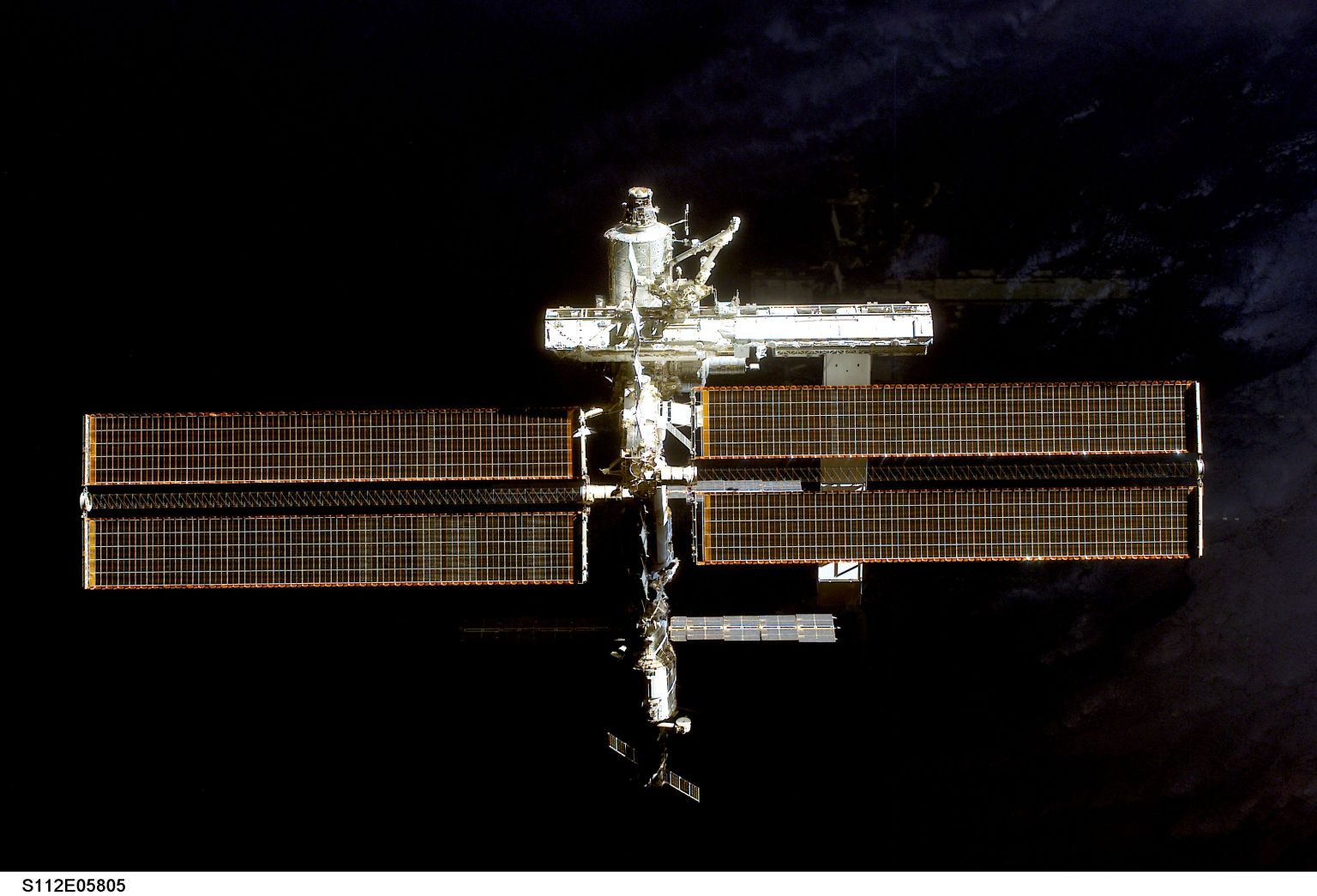
CSA (Canadian Space Agency)
Mobile Base System (MBS)
Launched on June 5, 2002. Installed on June 10, 2002.
The Mobile Base System provides a movable work platform for the Canadarm2 and Dextre robotic components.
Learn more about the Mobile Base System about Mobile Base System (MBS)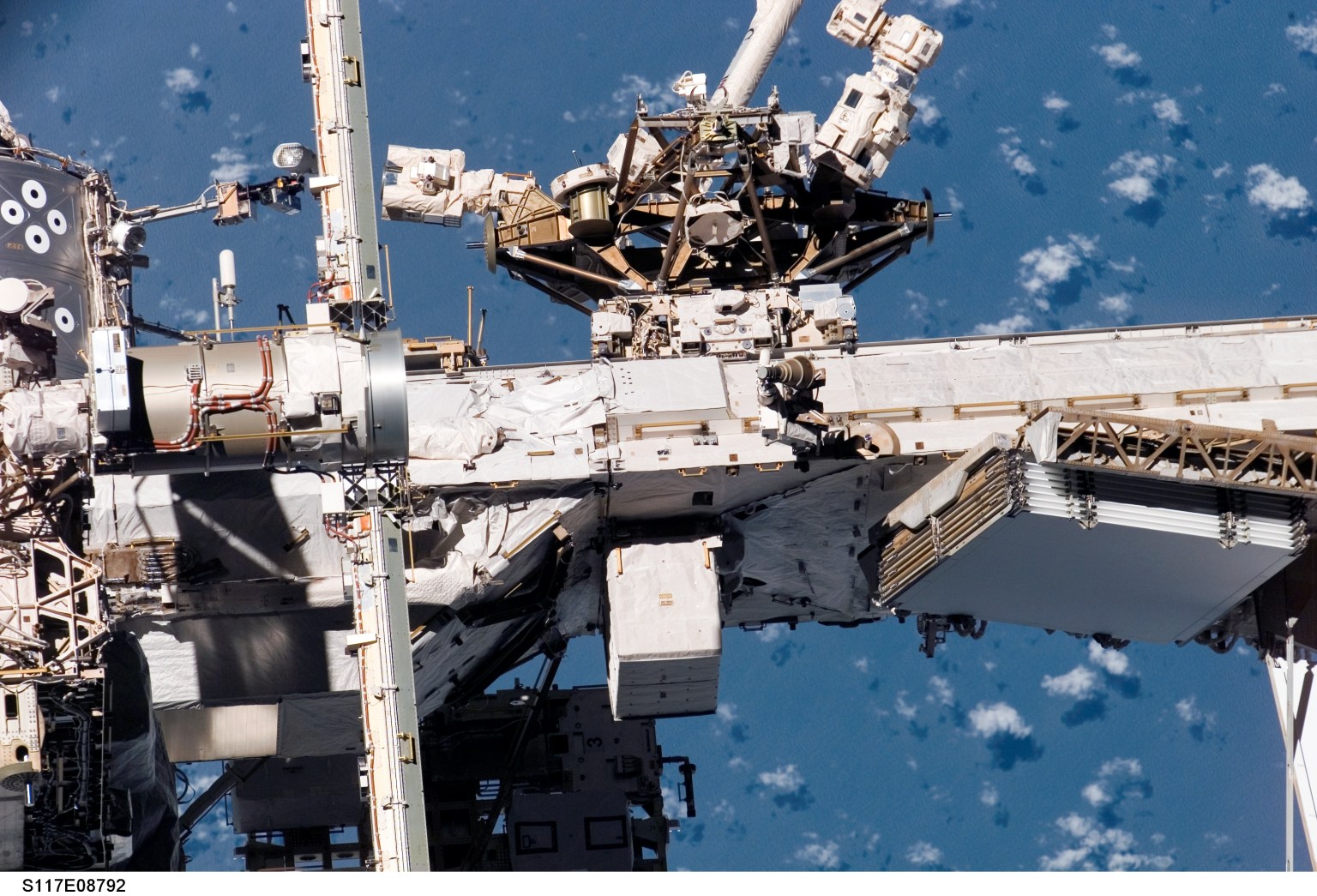
NASA
S0 (Starboard) Truss
Launched on April 8, 2002. Installed on April 11, 2002.
The Integrated Truss Structure is made up of 11 segments, plus a separate component called Zenith-1 (Z1), that are attachment points for the solar arrays, thermal control radiators, and external payloads on the International Space Station.
Learn more about the trusses and solar arrays about S0 (Starboard) Truss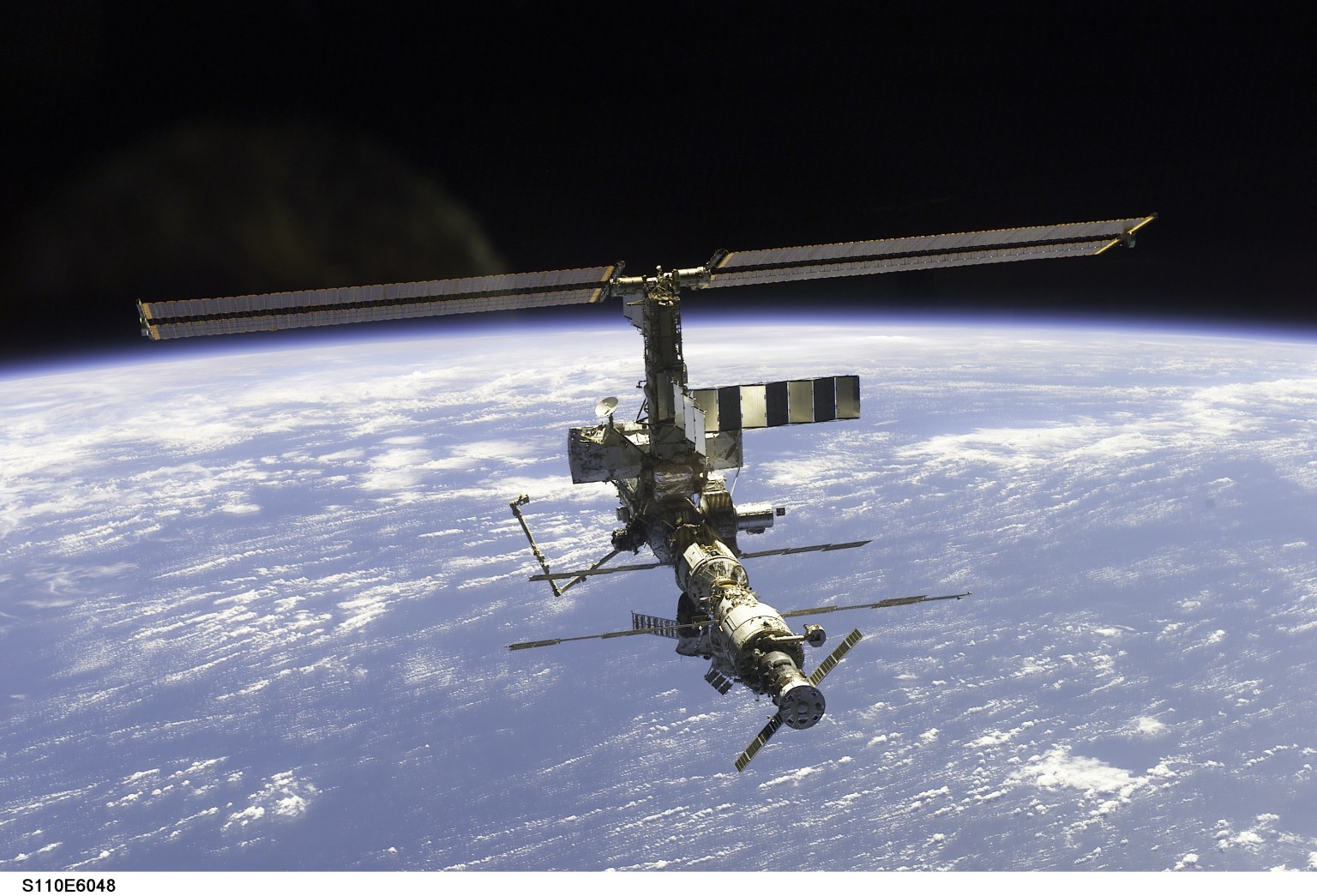
Roscosmos
Pirs Docking Compartment
Launched on Sept. 14, 2001. Installed on Sept. 16, 2001. Detached on July 23, 2021.
The Pirs docking compartment was a Roscosmos module on the International Space Station. It provided an airlock for spacewalks and served as a docking port for Soyuz crew and Progress cargo vehicles.
Learn more about Pirs about Pirs Docking Compartment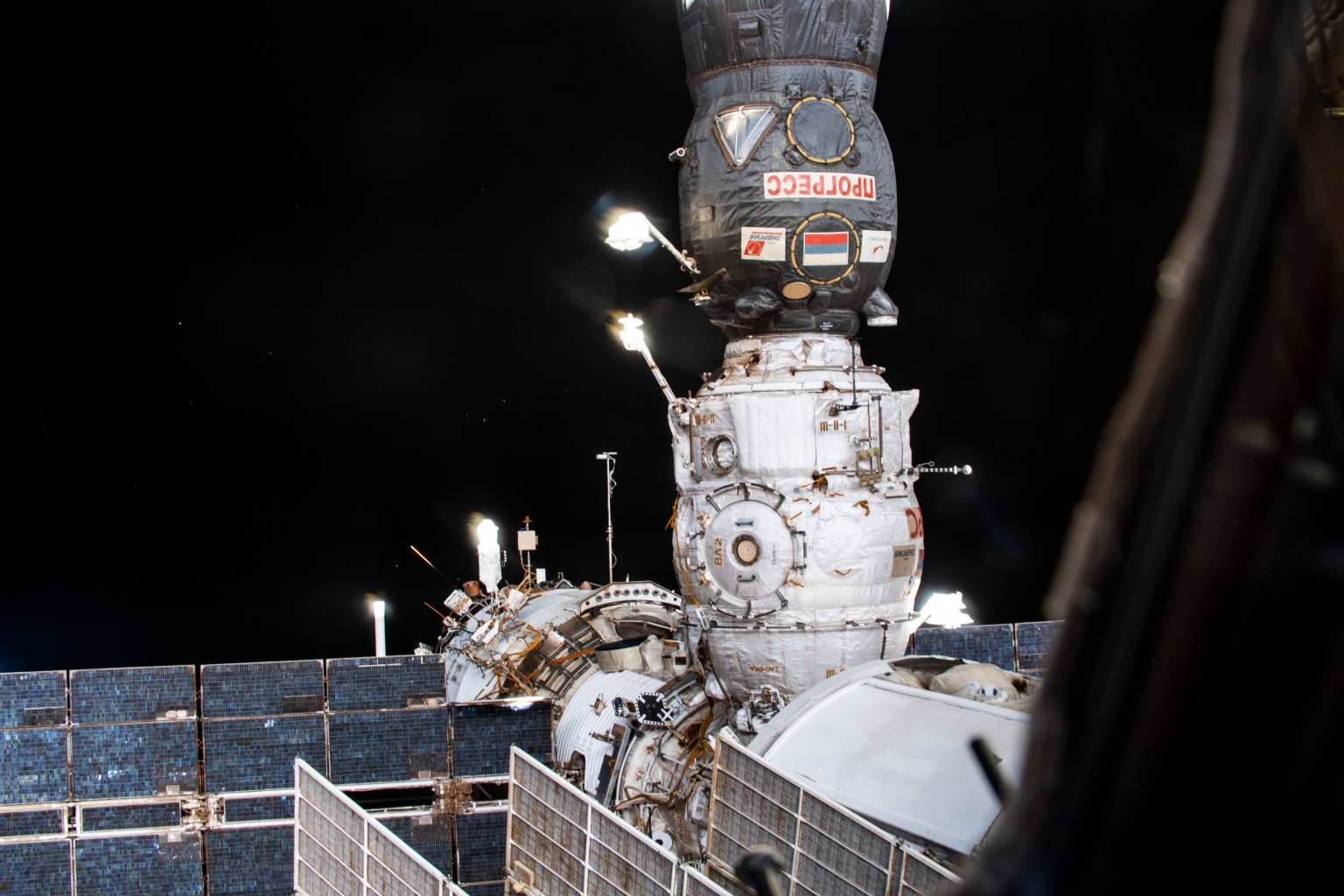
NASA
Quest Airlock
Launched on July 12, 2001. Installed on July 15, 2001.
The Quest Airlock consists of two compartments, or locks, attached end-to-end by a connecting bulkhead and hatch. The equipment lock provides the systems for spacesuit maintenance and refurbishment. The crew lock provides a safe exit and entry for astronauts performing spacewalks.
Learn more about Quest about Quest Airlock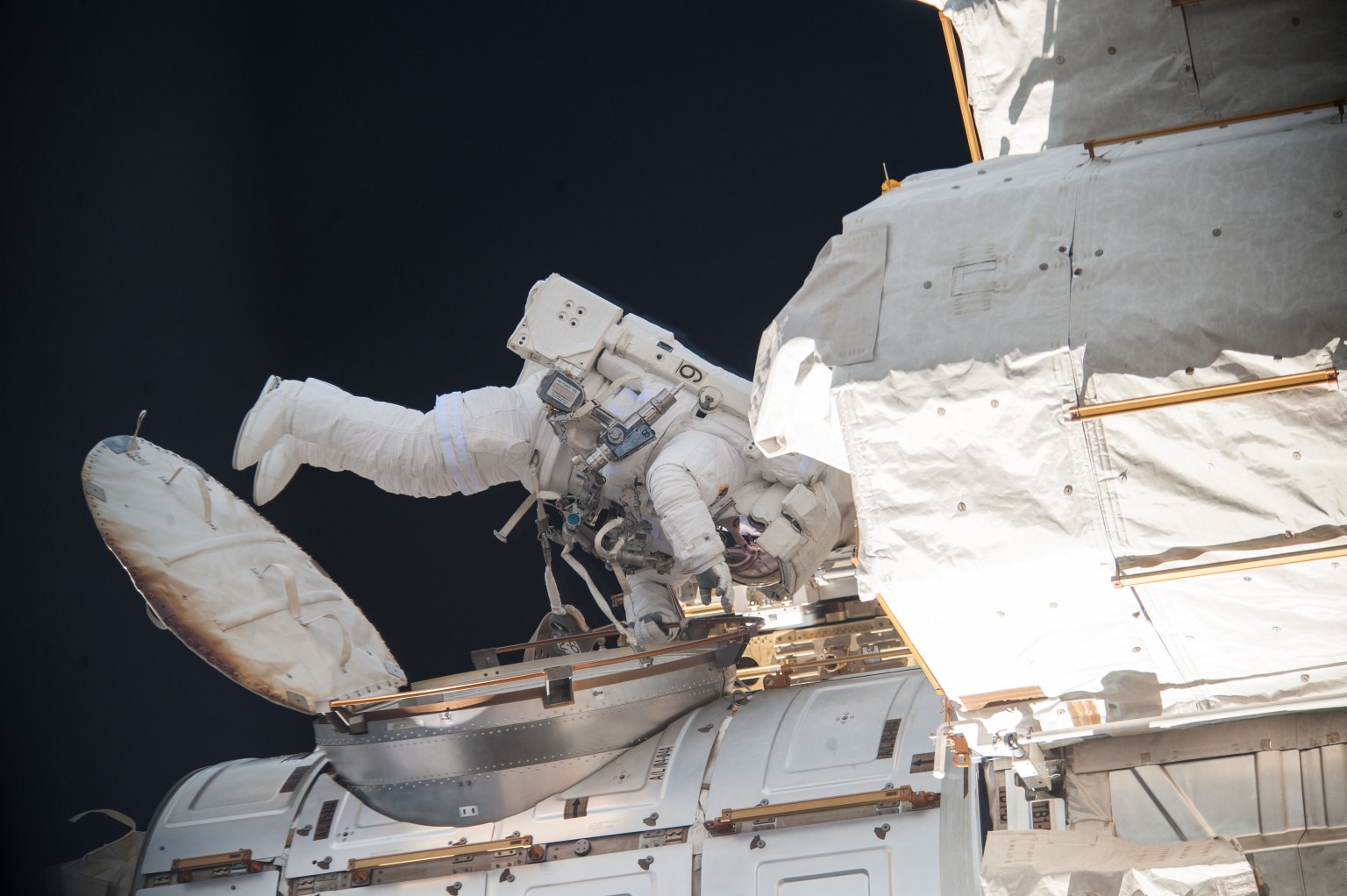
CSA (Canadian Space Agency)
Canadarm2 Robotic Arm
Launched on April 19, 2001. Installed on April 21, 2001.
The Canadarm2 is a 57.7-foot-long robotic arm that has helped assemble the International Space Station. It also maneuvers spacewalkers to their worksites and captures and installs cargo vehicles to the orbital outpost.
Learn more about Canadarm2 about Canadarm2 Robotic Arm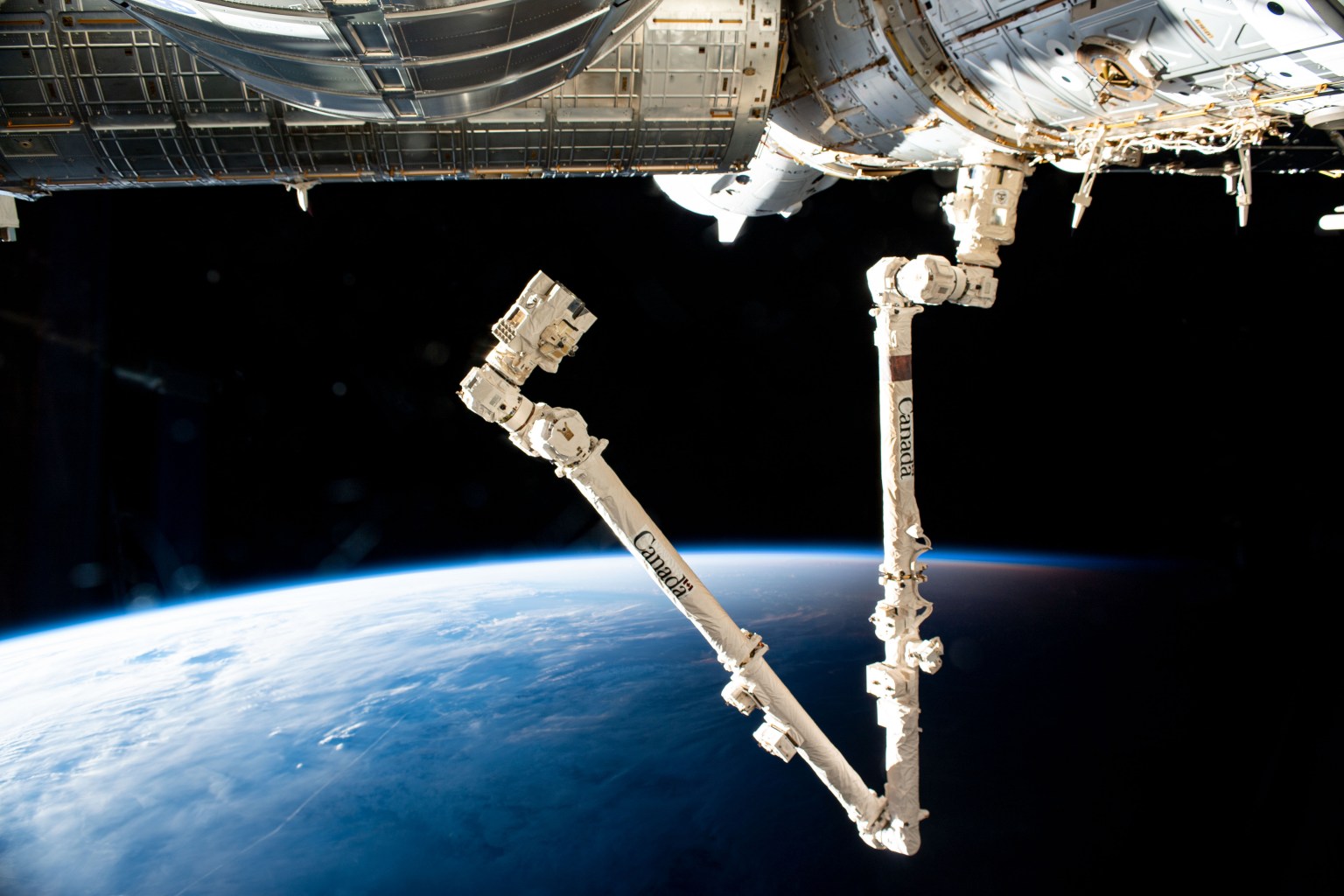
NASA
External Stowage Platform-1 (ESP-1)
Launched on March 8, 2001. Installed on March 13, 2001.
External Stowage Platforms (ESP) are external pallets that can hold spare parts on the International Space Station. The unpressurized ESPs require electricity to power the heaters of some of the stored equipment.
Learn more about the ESPs about External Stowage Platform-1 (ESP-1)
NASA
Destiny Laboratory Module
Launched on Feb. 7, 2001. Installed on Feb. 10, 2001.
The U.S. Destiny laboratory module is the primary research laboratory for U.S. payloads, supporting a wide range of experiments and studies contributing to health, safety, and quality of life for people all over the world.
Learn more about Destiny about Destiny Laboratory Module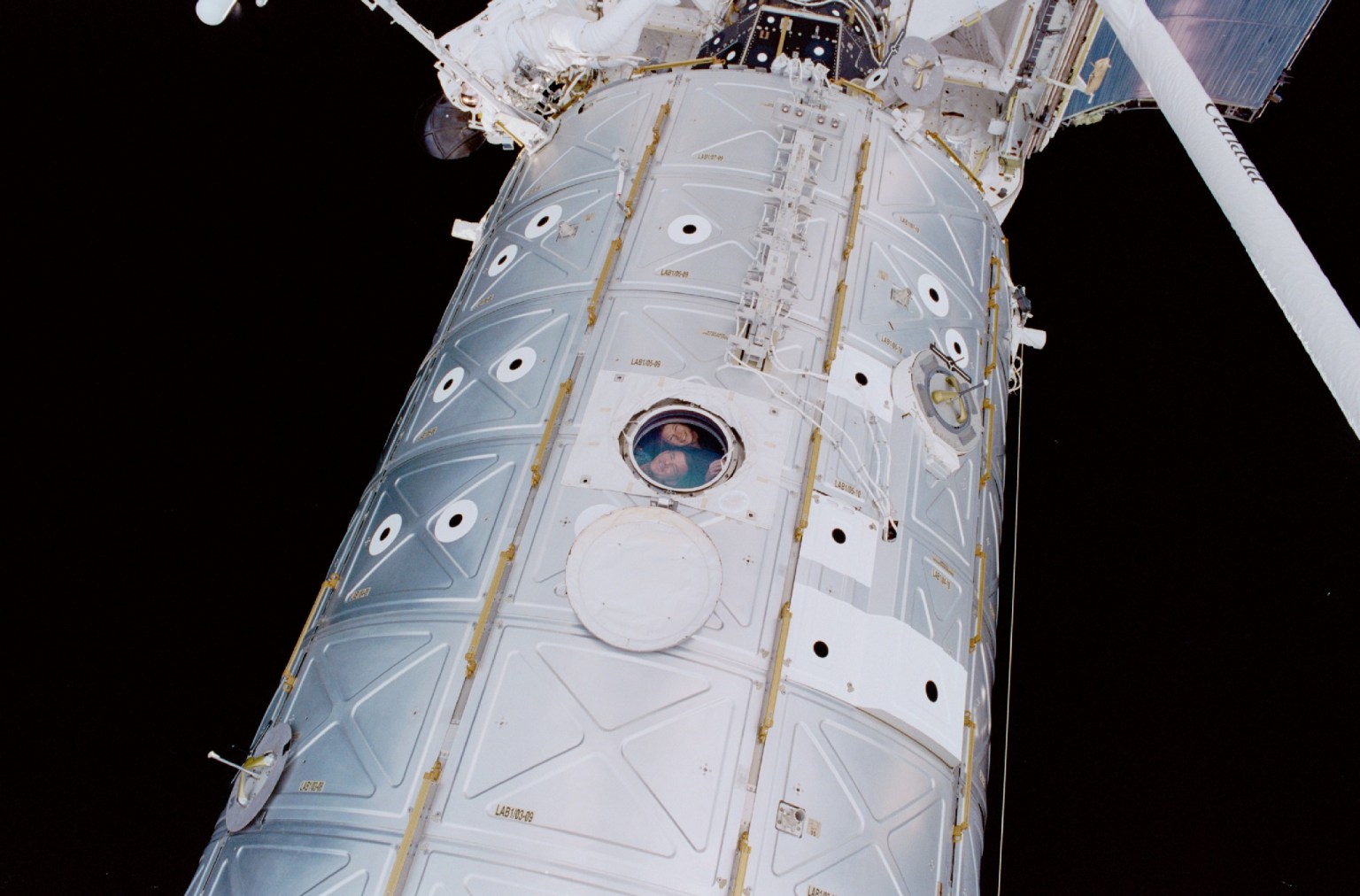
NASA
P6 (Port) Truss and Solar Arrays
Launched on Nov. 30, 2000. Installed on Dec. 2, 2000.
The Integrated Truss Structure is made up of 11 segments, plus a separate component called Zenith-1 (Z1), that are attachment points for the solar arrays, thermal control radiators, and external payloads on the International Space Station.
Learn more about the trusses and solar arrays about P6 (Port) Truss and Solar Arrays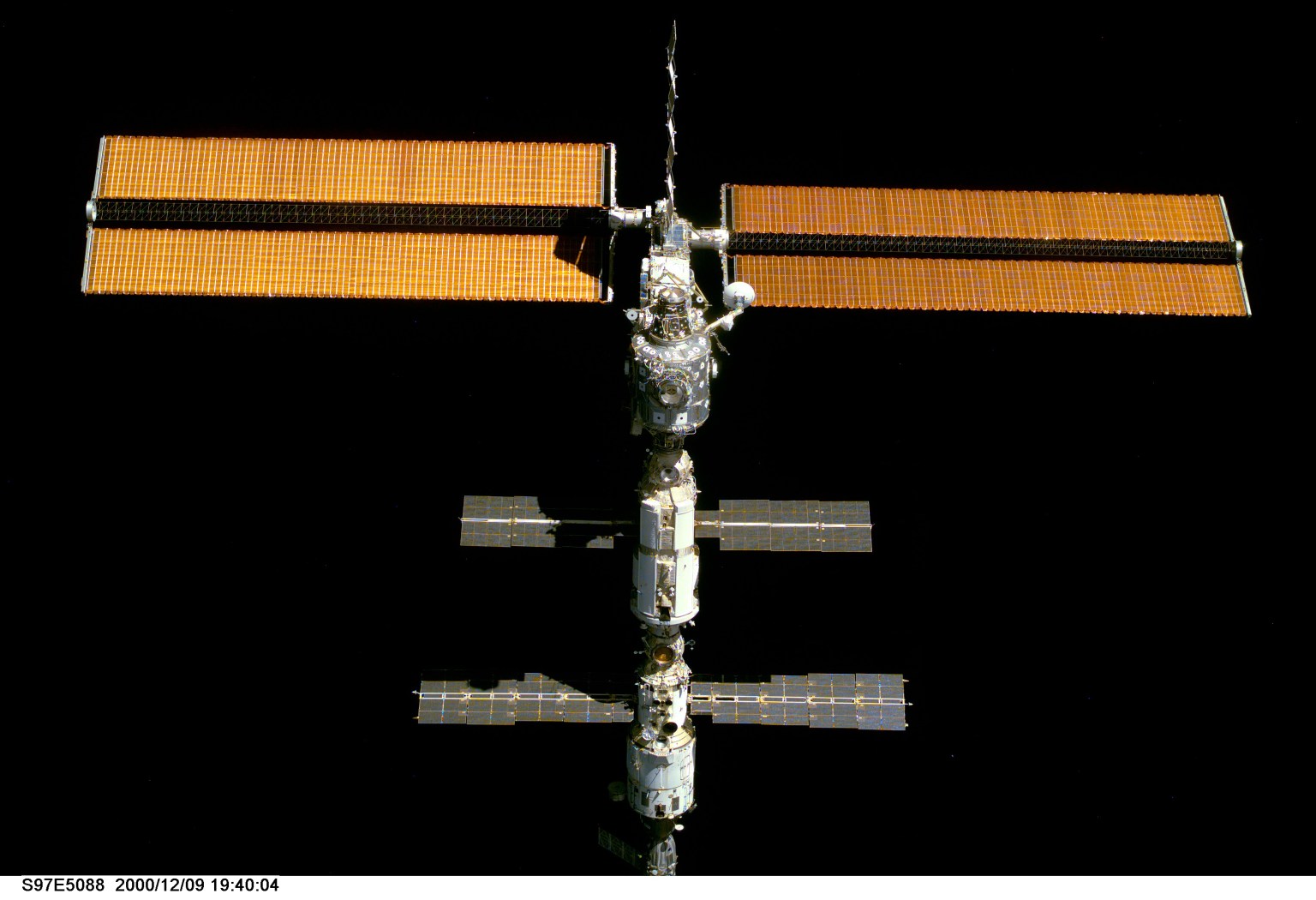
NASA
Z1 (Zenith) Truss
Launched on Oct. 11, 2000. Installed on Oct. 14, 2000.
The Integrated Truss Structure is made up of 11 segments, plus a separate component called Zenith-1 (Z1), that are attachment points for the solar arrays, thermal control radiators, and external payloads on the International Space Station.
Learn more about the trusses and solar arrays about Z1 (Zenith) Truss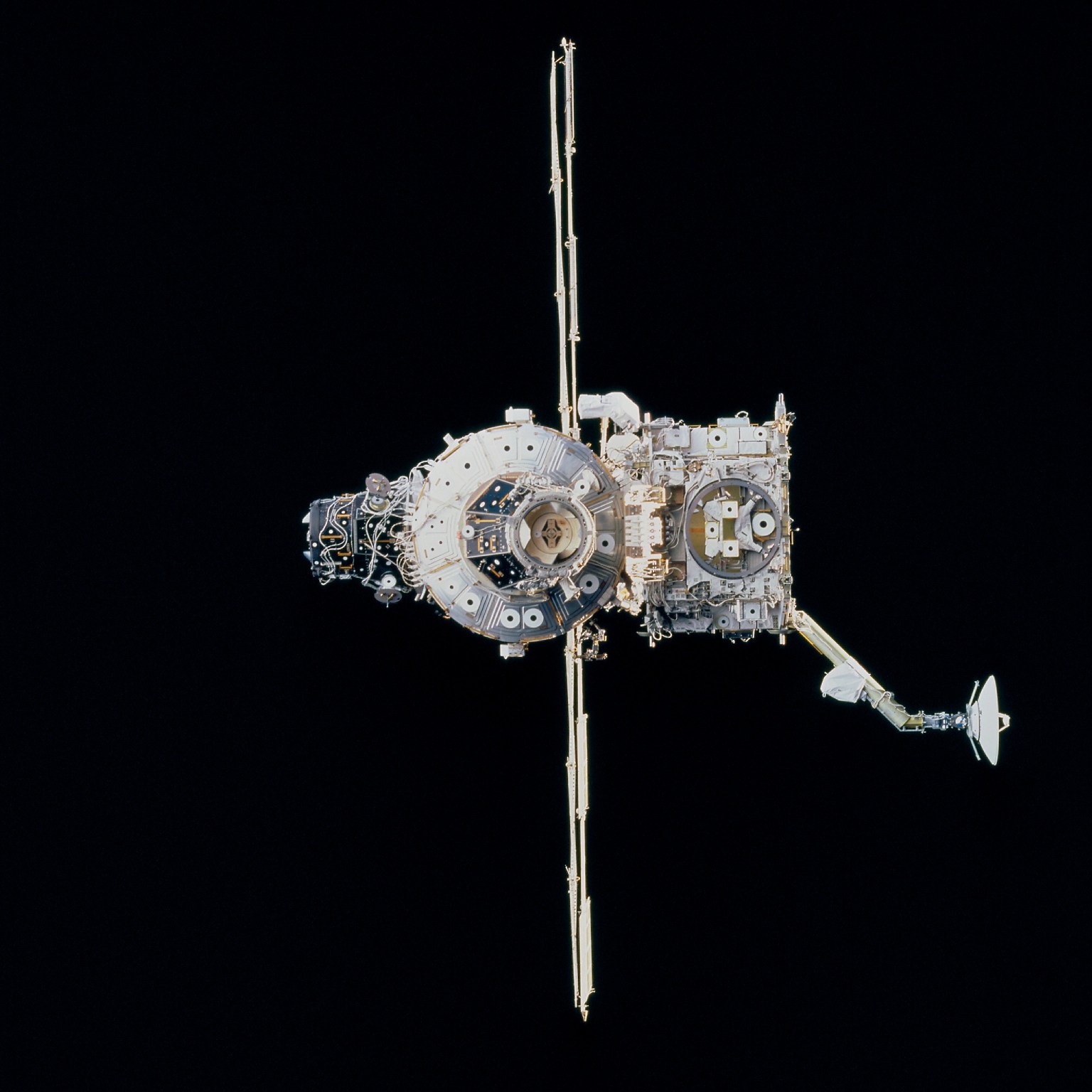
Roscosmos
Zvezda Service Module
Launched on July 12, 2000. Installed on July 25, 2000.
The Zvezda Service Module provides living quarters, life support systems, electrical power distribution, data processing systems, flight control systems and propulsion systems for the International Space Station. It also provides ports for Soyuz crew and cargo vehicles, as well as different Roscosmos modules.
Learn more about Zvezda about Zvezda Service Module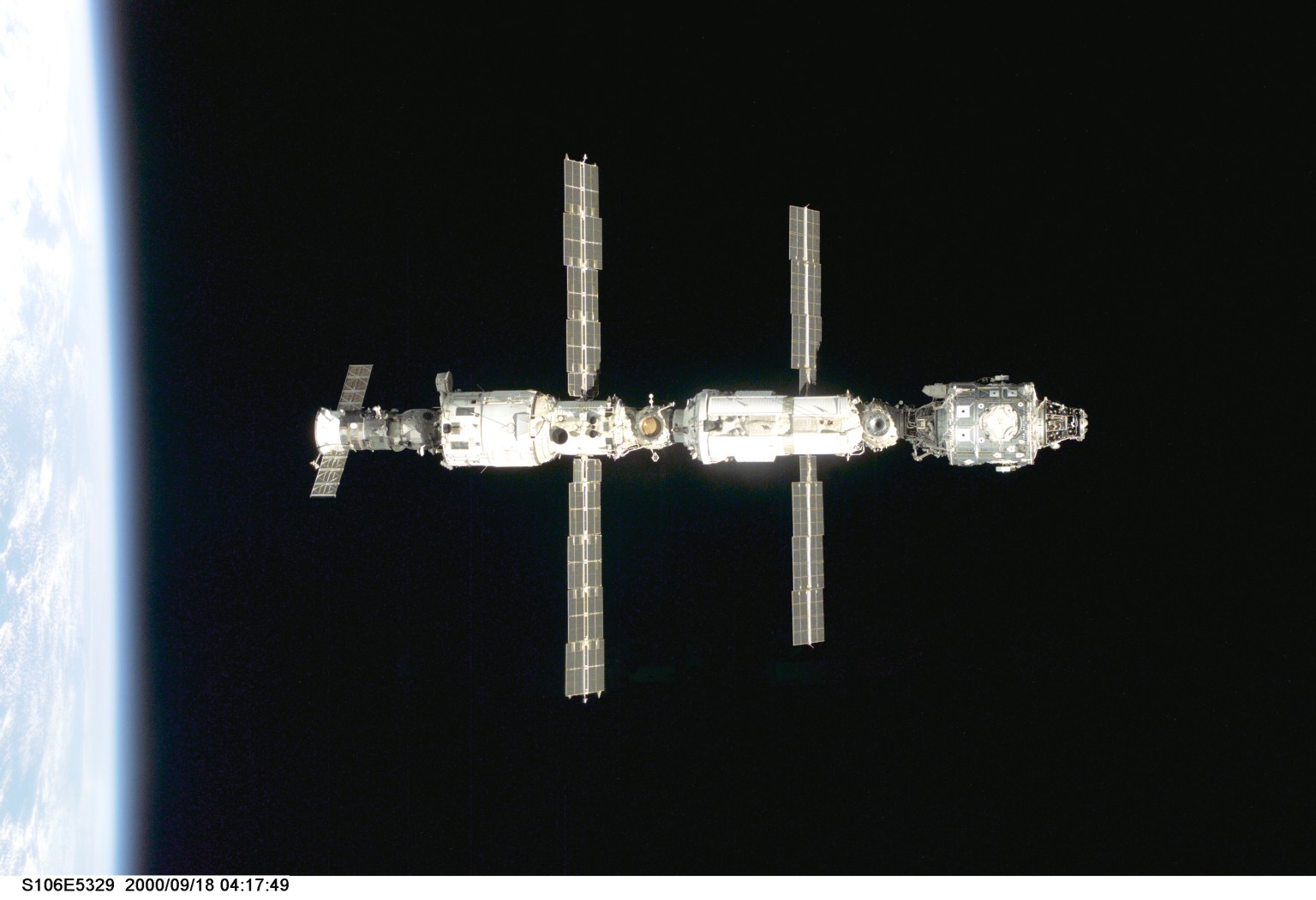
NASA
Unity Module
Launched on Dec. 4, 1998. Installed on Dec. 6, 1998.
The Unity module was the second component of the International Space Station launched to space. It provides living and working space for crew members, contains over 50,000 mechanical items, 216 lines to carry fluids and gases, and 121 internal and external electrical cables using six miles of wire.
Learn more about Unity about Unity Module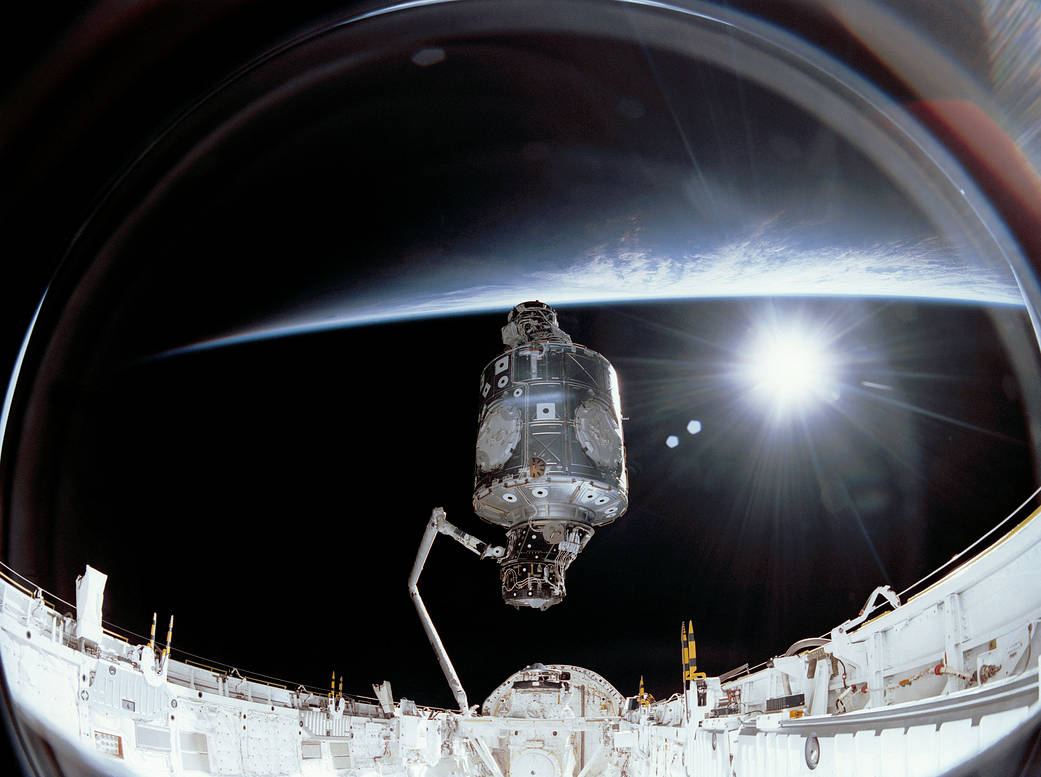
Roscosmos
Zarya Module
Launched on Nov. 20, 1998
The Zarya Module was the first component launched for the International Space Station. The U.S.-funded and Russian-built Zarya, which means “Sunrise,” is a U.S. component of the station, although it was built and launched by Russia.
Learn more about Zarya about Zarya Module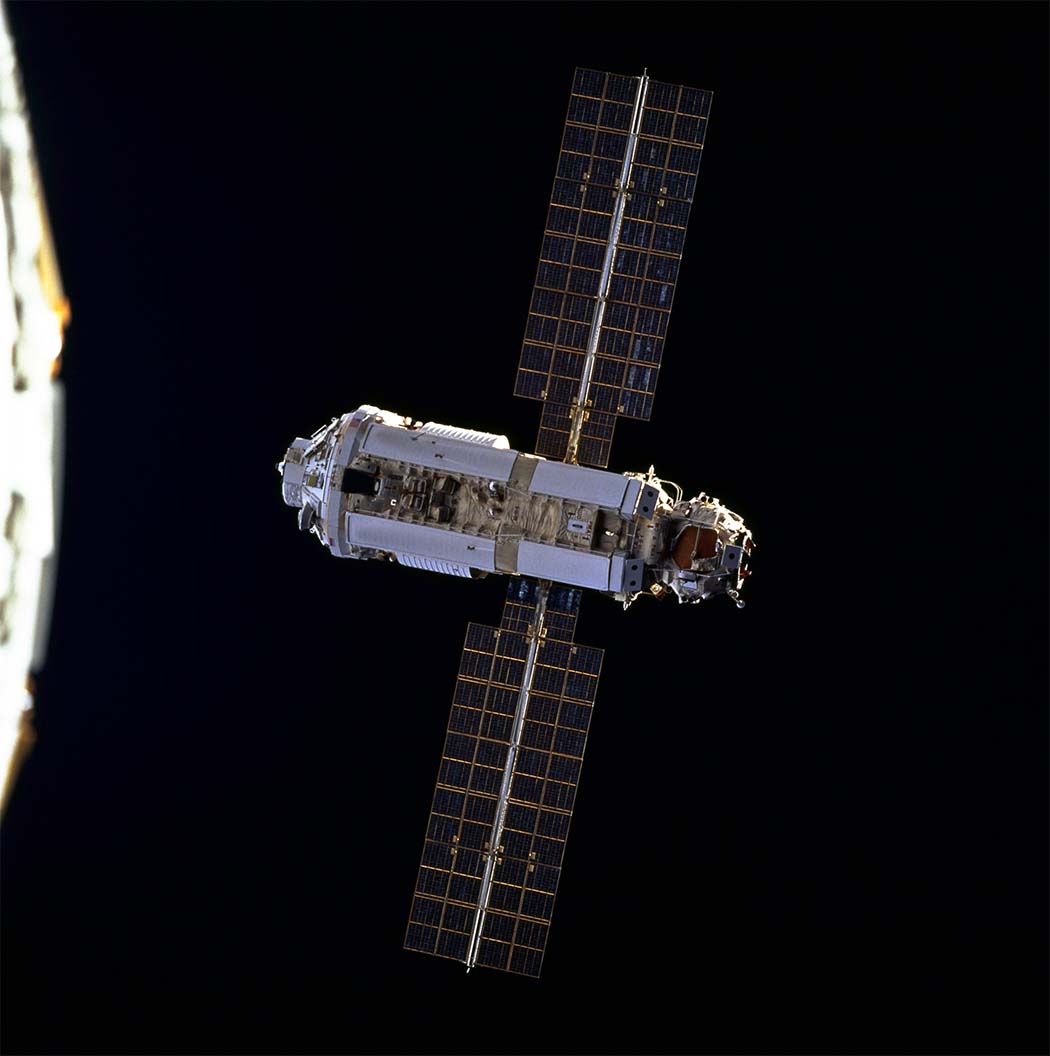

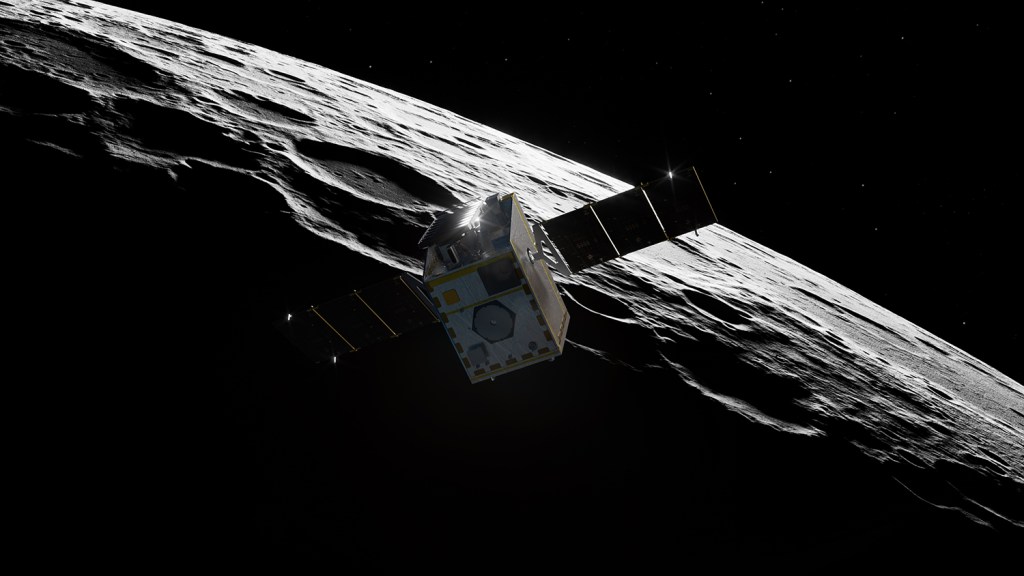
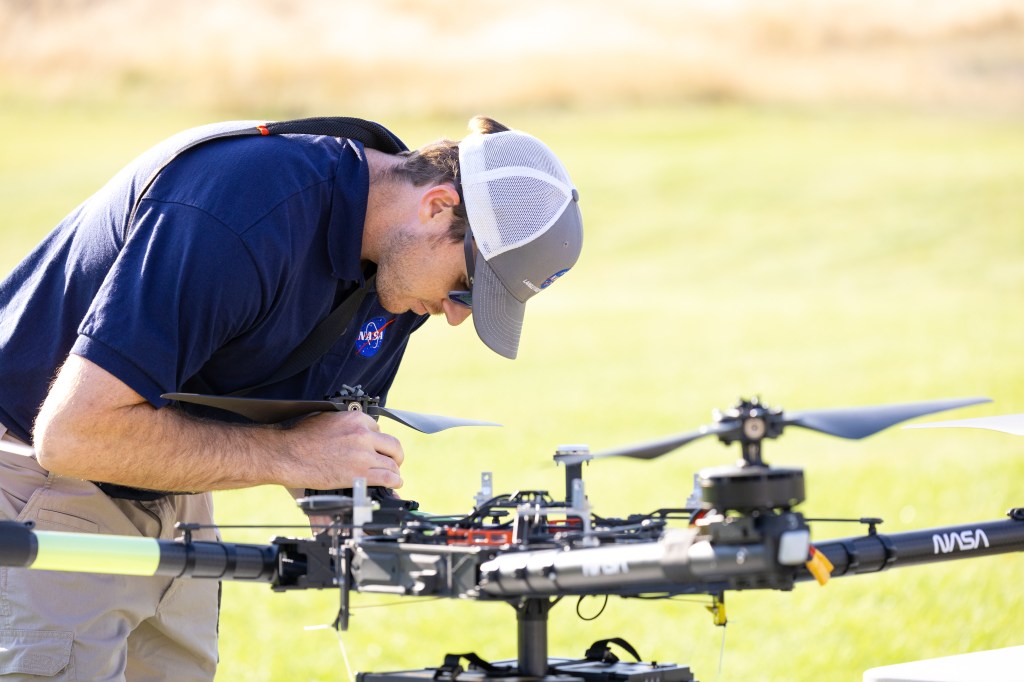

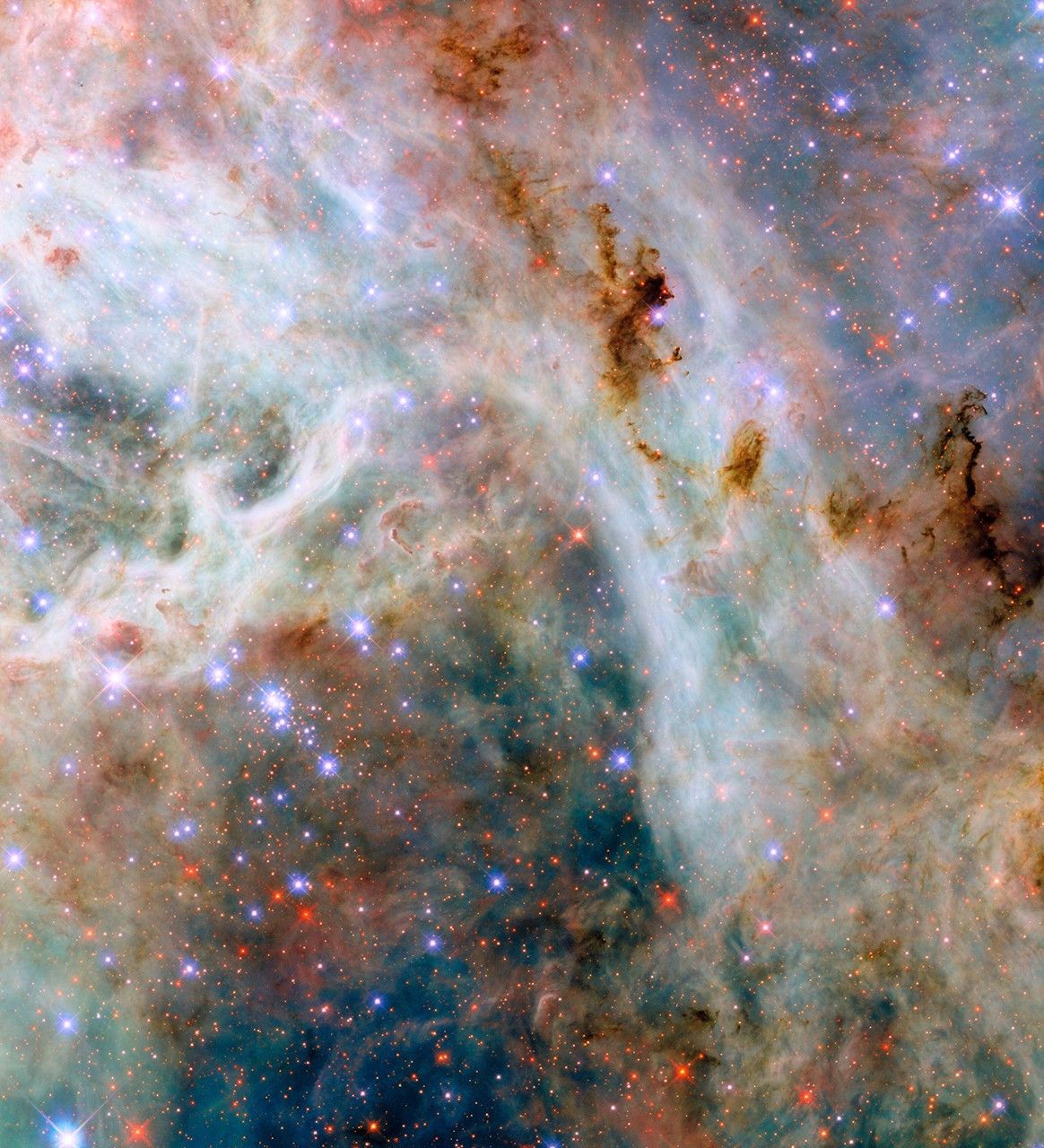
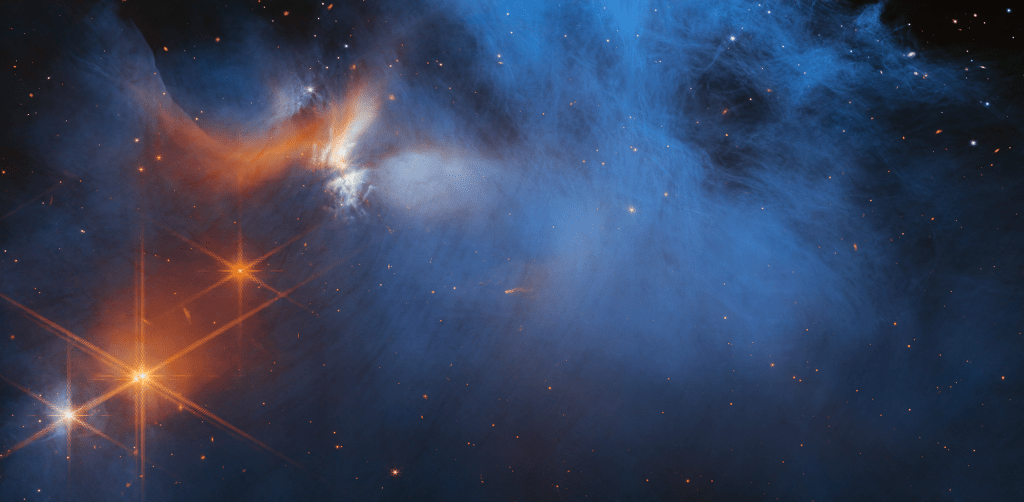

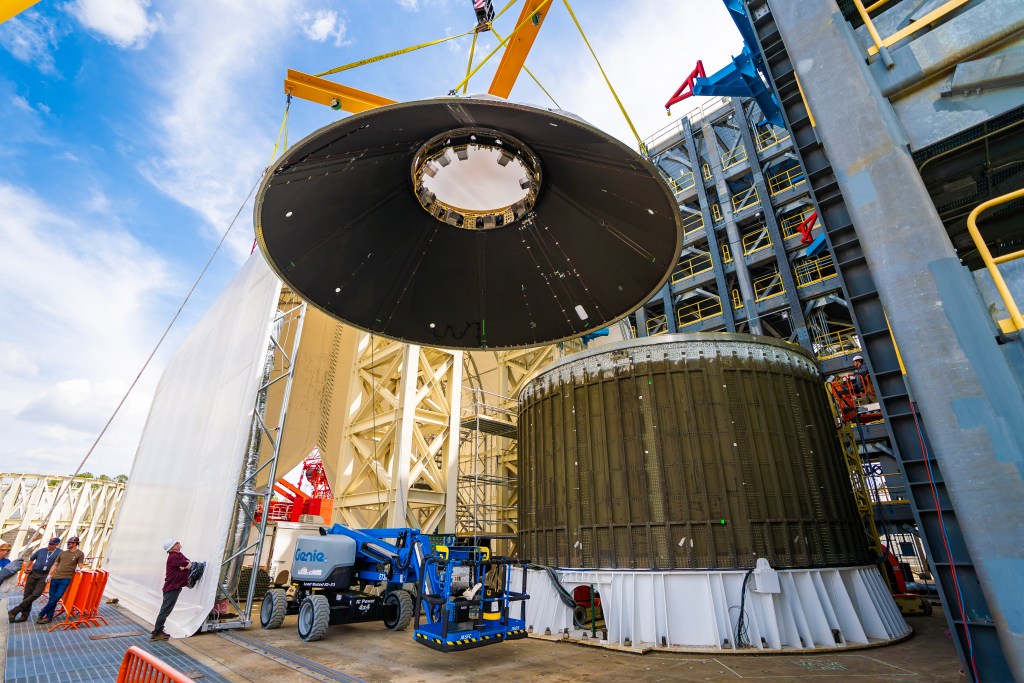
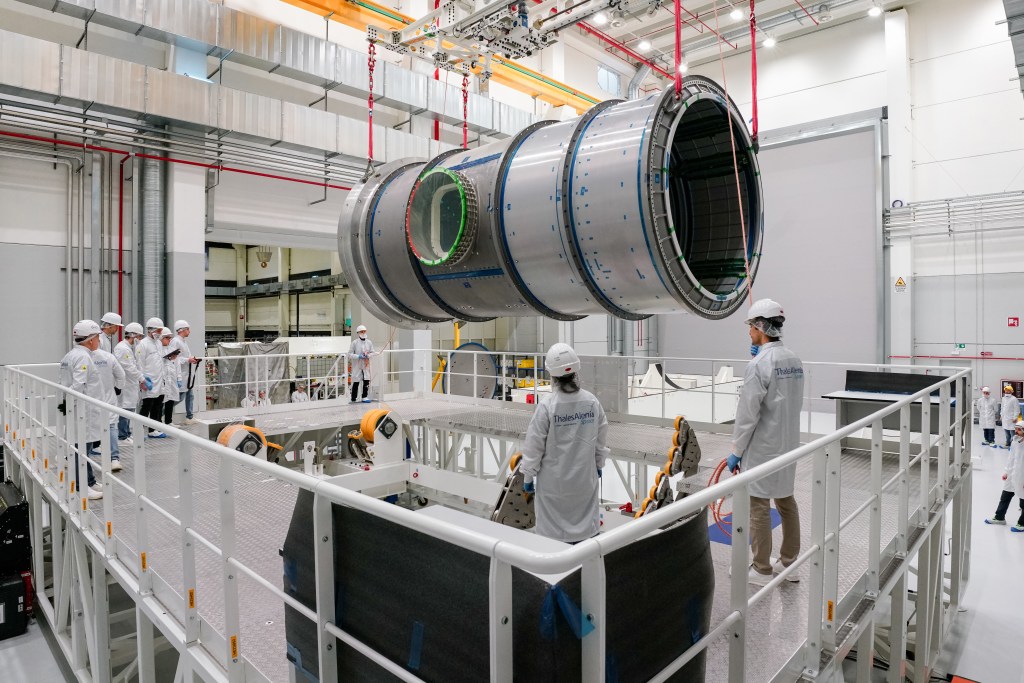
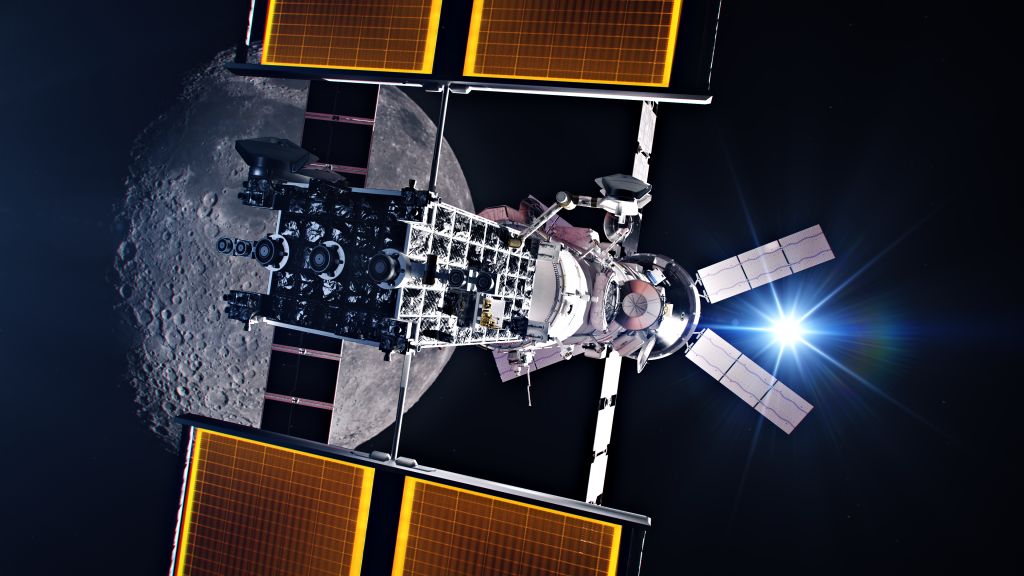
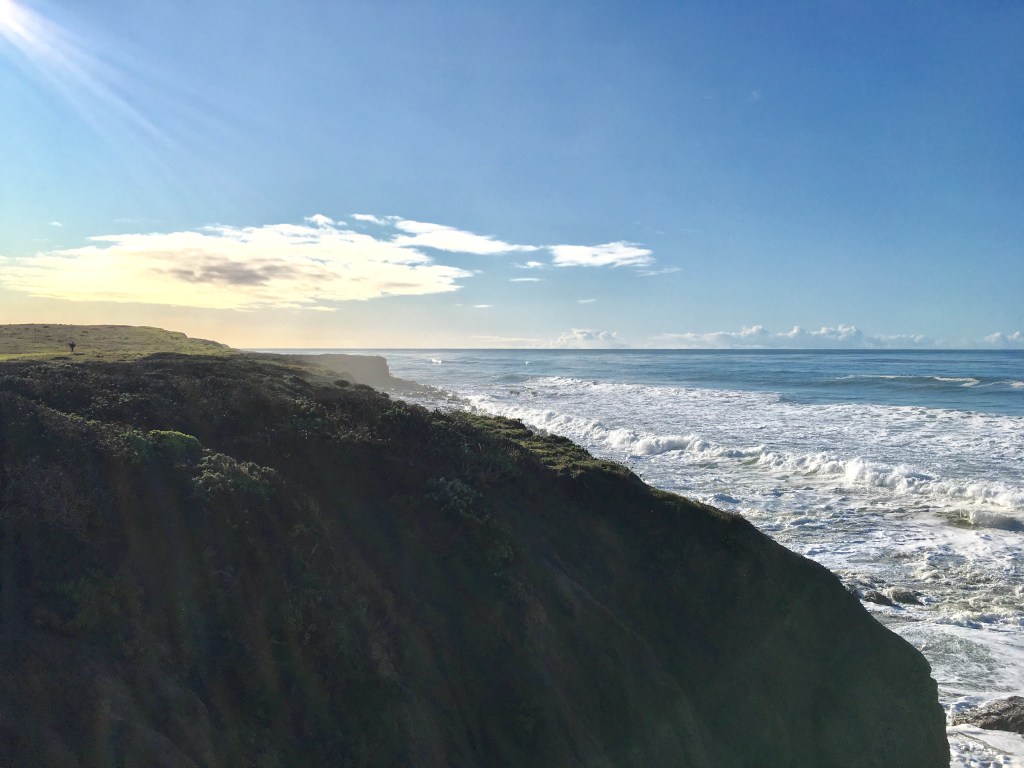
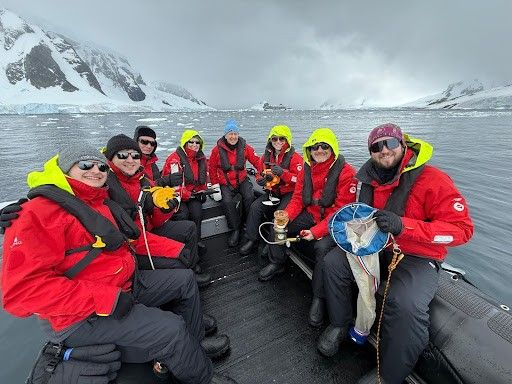

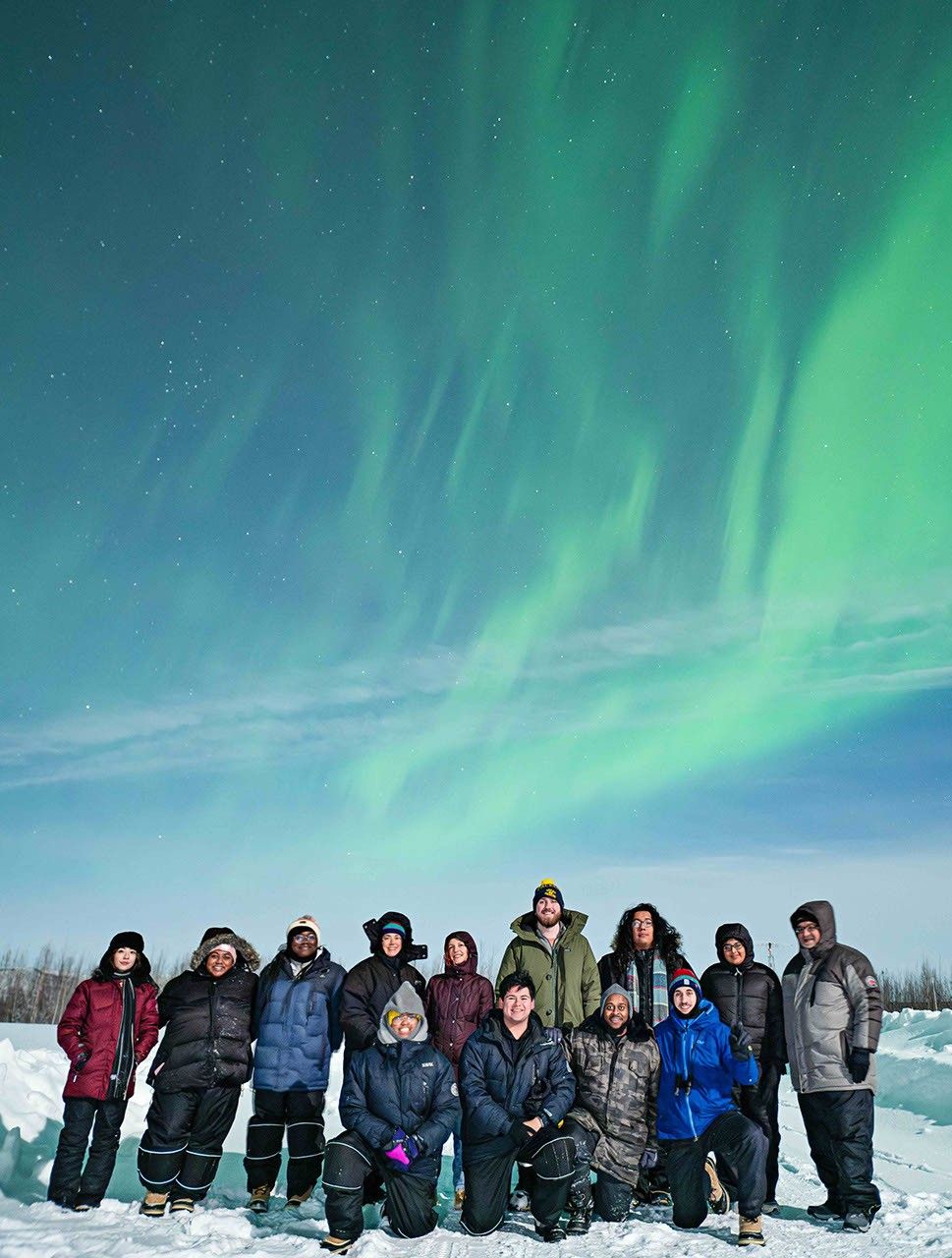
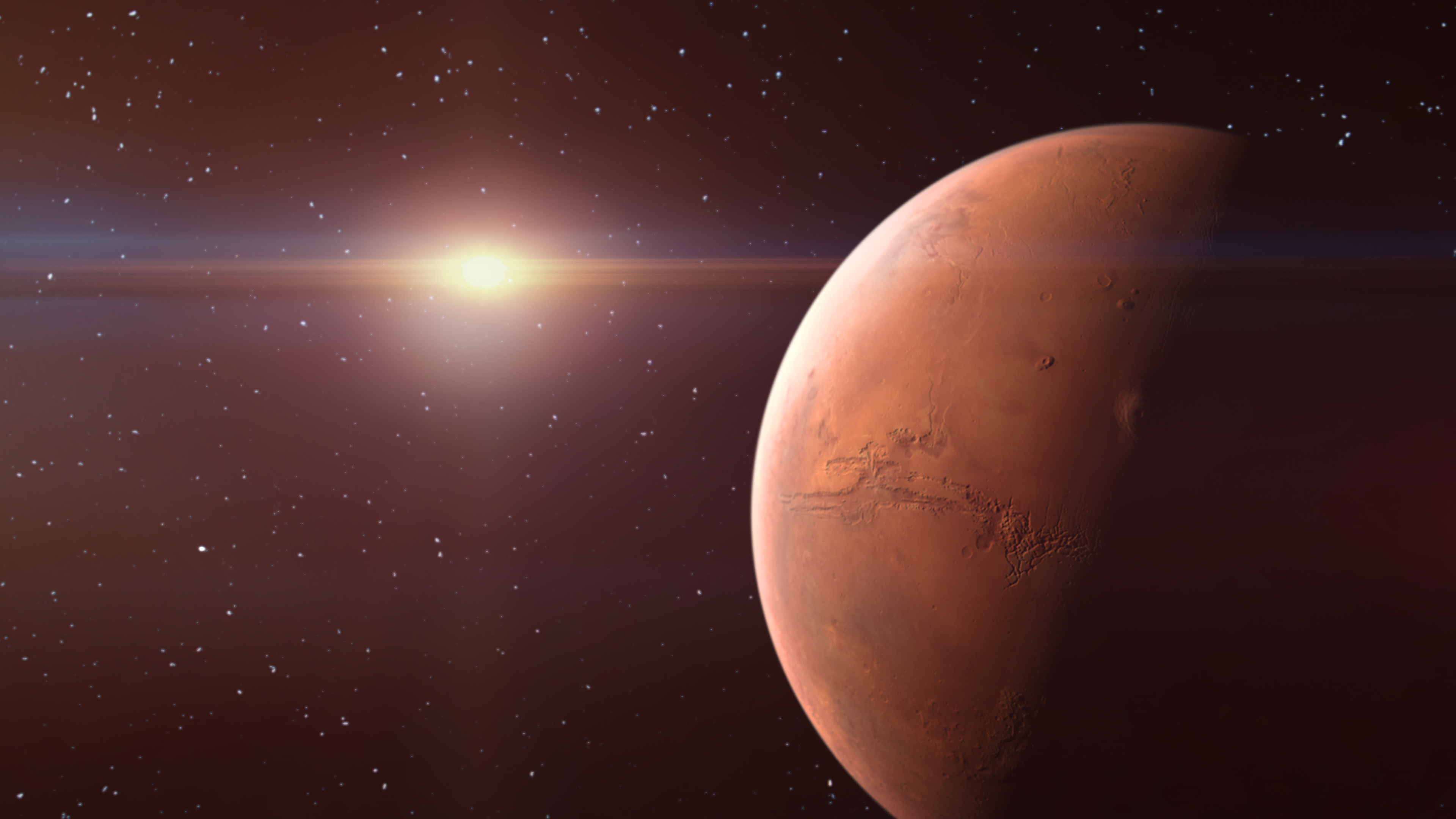
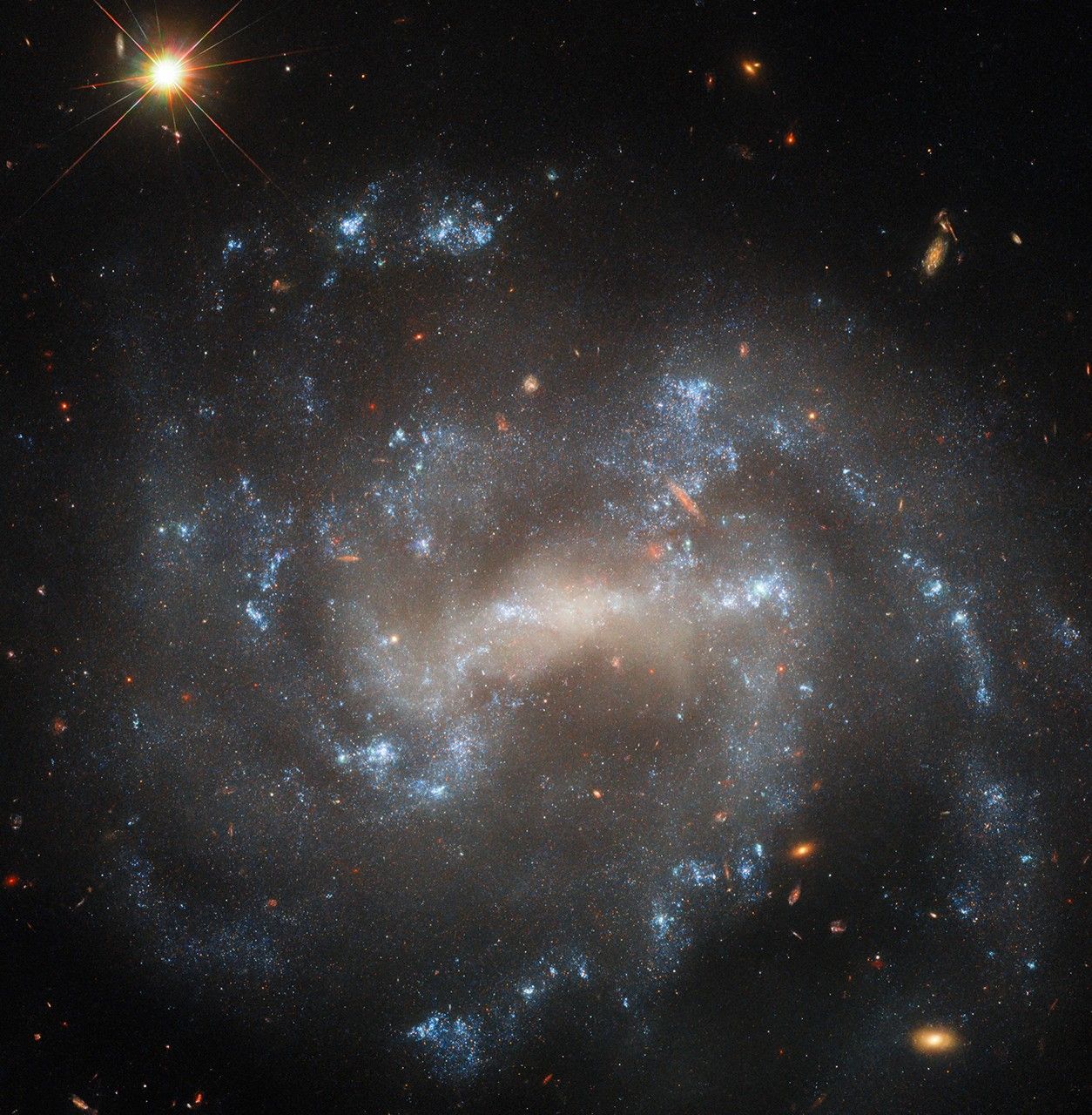
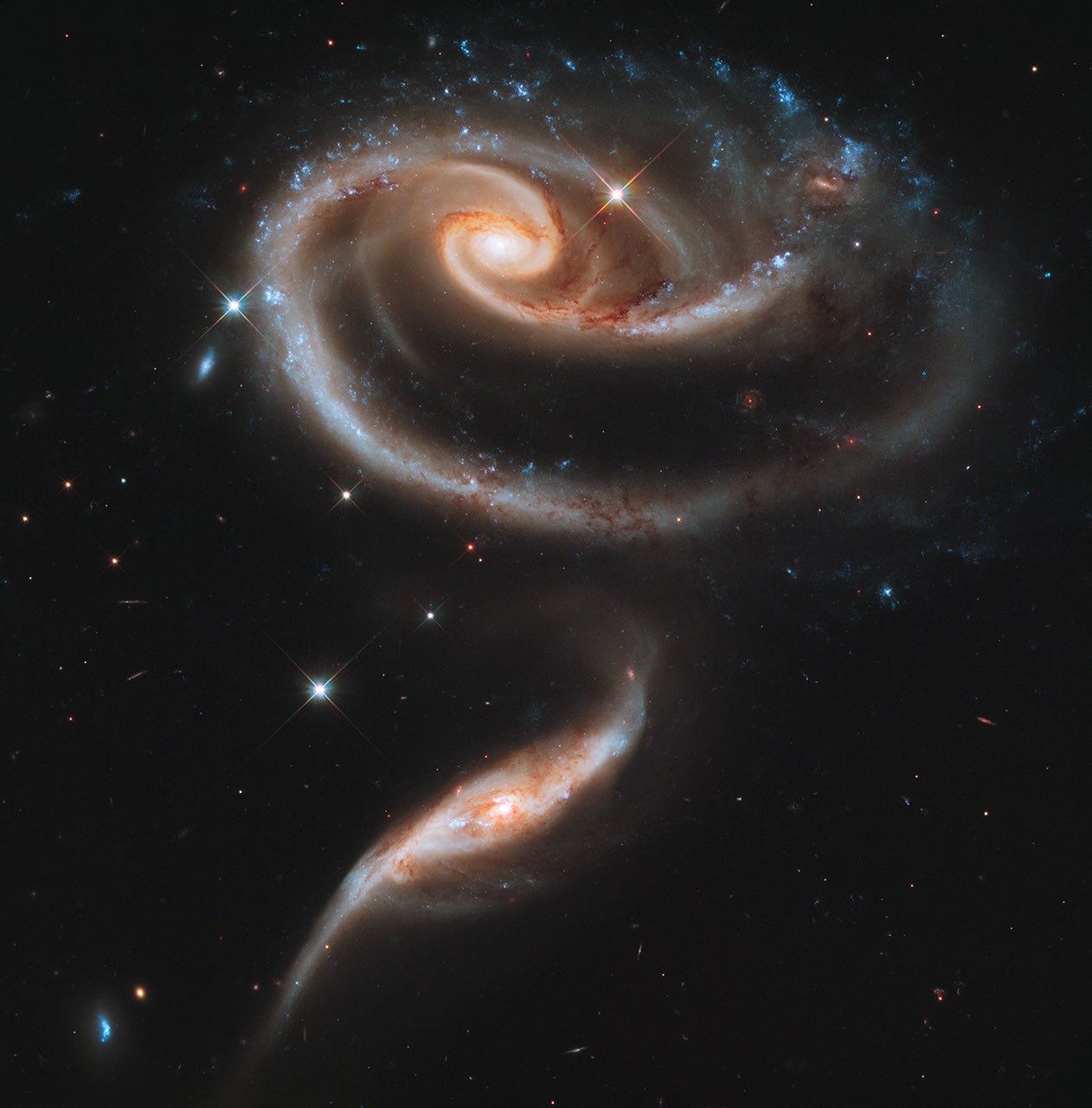
![In Memoriam: Jeff Dozier [1944–2024]](https://assets.science.nasa.gov/dynamicimage/assets/science/esd/earth-observer/2025/2025-in-memoriam/InMemoriam-Dozier1.jpg)

